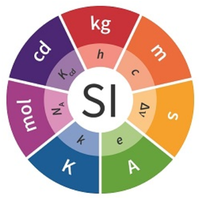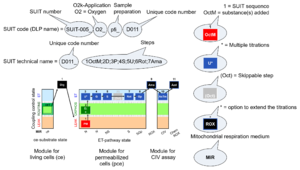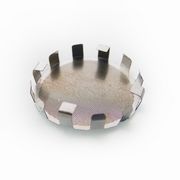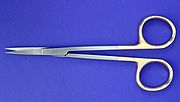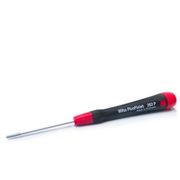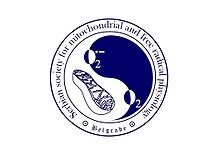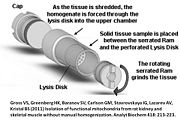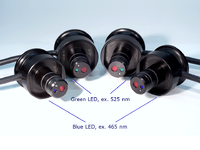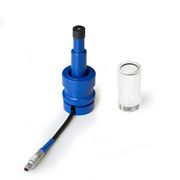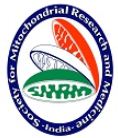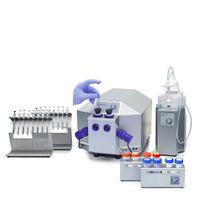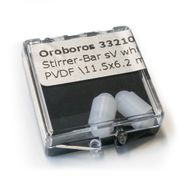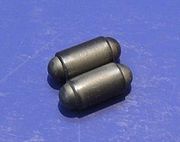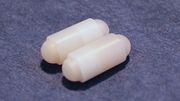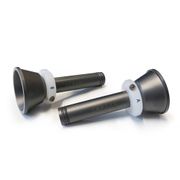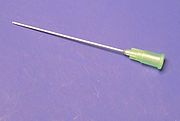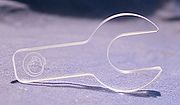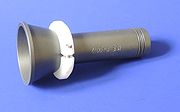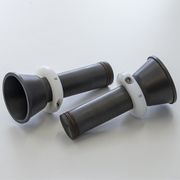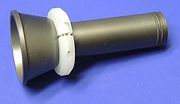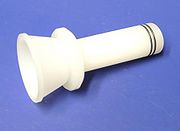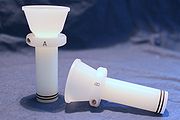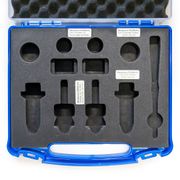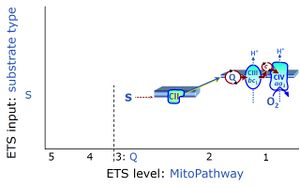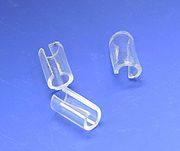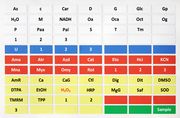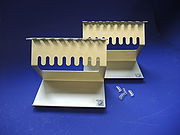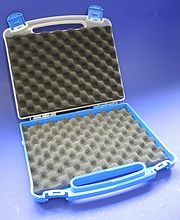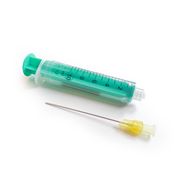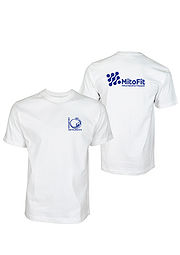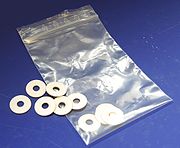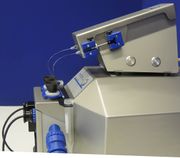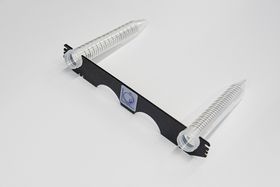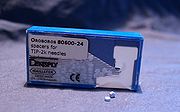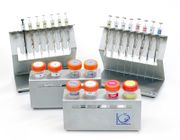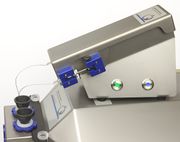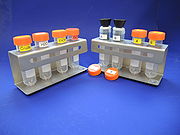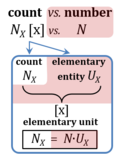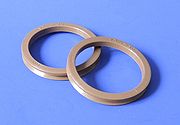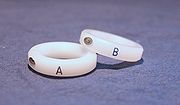Semantic search
| Term | Abbreviation | Description | |||||||||||||||||||||||||||||||||||||||||||||||||||||||
|---|---|---|---|---|---|---|---|---|---|---|---|---|---|---|---|---|---|---|---|---|---|---|---|---|---|---|---|---|---|---|---|---|---|---|---|---|---|---|---|---|---|---|---|---|---|---|---|---|---|---|---|---|---|---|---|---|---|
| Replica | N | Replica are designed in scientific studies to evaluate the effect of uncontrolled variability on a result obtained from an experiment on a single sample, to describe the variability and distribution of experimental results, and to obtain statistical information such as the median or average for a defined sample size. It may be useful to make a terminological distinction between replica of experiments, N, designed to obtain statistical information on the population, and repetitions of experiments or assays, n, designed to obtain statistical information on the methodological precision of the measurements. The terms study, experiment and assay have to be defined carefully in this context. | |||||||||||||||||||||||||||||||||||||||||||||||||||||||
| Reproducibility crisis | The reproducibility crisis is alarming.1 An experiment or study is reproducible or replicable when subsequent experiments confirm the results. This is re-search. However, we can define different types of reproducibility depending on the conditions that we use to replicate the previous work or in the information available. Our aim is to focus mostly on two different kinds2: 1. Direct: is when we obtaining the same results using the same experimental conditions, materials, and methods as described in the original experiment. This would be the ideal reproducibility of an experiment. However, it requires a very accurate description of how the original experiment was performed. Some journals are trying to resolve the reproducibility crisis improving the rigor and the excellence on the reported methods and results (e.g. STAR Methods in Cell Press). 2. Systematical: refers to obtaining the same results, but under different conditions; for example, using another cell line or mouse strain or humman study, or inhibiting a gene pharmacologically instead of genetically. This opens the door to subsequent studies to find the conditions under which an initial finding holds. | ||||||||||||||||||||||||||||||||||||||||||||||||||||||||
| Requirement | A requirement is a singular documented physical or functional need that a particular design, product or process must be able to perform. | ||||||||||||||||||||||||||||||||||||||||||||||||||||||||
| Research | Research is a term composed of search and re. What does this tell us? The best comparison of the English with a German word is Untersuchung, composed of suchung (search) and unter (below). The term search (suchen) is straightforward to understand and comparable in both languages. The prefix re and unter are more difficult to reconcile, yet in both languages these perfixes reveal complementary if not nearly identical messages. re means {Quote} back to the original place; again, anew, once more {end of Quote} [1], whereas unter means below or underneath. Re-search, therefore, is not simply the search or investigation of some topic or problem, it means essentially doing the search again and again (re -> re-producibility) and penetrating below a simple search by reaching out for an underlying level of the search. The re in re-search and re-producibility has to be extended ultimately from a single re-search group to inter-laboratory re-investigation. This tells us, therefore, that while search is valuable, re-search provides the necessary validation. This re-evaluation of confirmative re-search should be re-cognized as the most important strategy to address the reproducibility crisis. | ||||||||||||||||||||||||||||||||||||||||||||||||||||||||
| Residual endogenous substrates | REN, Ren |
Ren may be higher than Rox. Correspondingly, Q and NAD are not fully oxidized in the REN state compared to the ROX state. In previous editions (including Gnaiger 2020 BEC MitoPathways), the REN state was not distinguished from the ROX state. However, in novel applications (Q-Module and NADH-Module), a distinction of these states is necessary. Care must be taken when assuming Ren as a substitute of Rox correction of mitochondrial respiration. | |||||||||||||||||||||||||||||||||||||||||||||||||||||||
| Residual oxygen consumption | ROX, Rox |
In previous editions, (including Gnaiger 2020 BEC MitoPathways), the REN state was not distinguished from the ROX state. However, in novel applications (Q-Module and NADH-Module), a distinction of these states is necessary. Care must be taken when assuming Ren as a substitute of Rox correction of mitochondrial respiration. | |||||||||||||||||||||||||||||||||||||||||||||||||||||||
| Resolution | Spectral resolution is a measure of the ability of an instrument to differentiate between two adjacent wavelengths. Two wavelengths are normally considered to be resolved if the minimum detector output signal (trough) between the two peaks is lower than 80 % of the maximum. The resolution of a spectrofluorometer or spectrophotometer is dependent on its bandwidth. | ||||||||||||||||||||||||||||||||||||||||||||||||||||||||
| Resorufin | Res | Resorufin is a fluorescence probe used in various biological assays. Among others, it is the product obtained in the Horseradish peroxidase-catalyzed assay using Amplex Red for the measurement of H2O2 production. | |||||||||||||||||||||||||||||||||||||||||||||||||||||||
| Respiratory acceptor control ratio | RCR | The respiratory acceptor control ratio (RCR) is defined as State 3/State 4 [1]. If State 3 is measured at saturating [ADP], RCR is the inverse of the OXPHOS control ratio, L/P (when State 3 is equivalent to the OXPHOS state, P). RCR is directly but non-linearly related to the P-L control efficiency, jP-L = 1-L/P, with boundaries from 0.0 to 1.0. In contrast, RCR ranges from 1.0 to infinity, which needs to be considered when performing statistical analyses. In living cells, the term RCR has been used for the ratio State 3u/State 4o, i.e. for the inverse L/E ratio [2,3]. Then for conceptual and statistical reasons, RCR should be replaced by the E-L coupling efficiency, 1-L/E [4]. | |||||||||||||||||||||||||||||||||||||||||||||||||||||||
| Respiratory chain | RC | The mitochondrial respiratory chain (RC) consists of enzyme complexes arranged to form a metabolic system of convergent pathways for oxidative phosphorylation. In a general sense, the RC includes (1) the electron transfer pathway (ET-pathway), with transporters for the exchange of reduced substrates across the inner mitochondrial membrane, enzymes in the matrix space (particularly dehydrogenases of the tricarboxylic acid cycle), inner membrane-bound electron transfer complexes, and (2) the inner membrane-bound enzymes of the phosphorylation system. | |||||||||||||||||||||||||||||||||||||||||||||||||||||||
| Respiratory complexes | CI, CII, CIII, CIV, CETF, CGpDH, .. | Respiratory Complexes are membrane-bound enzymes consisting of several subunits which are involved in energy transduction of the respiratory system. » MiPNet article | |||||||||||||||||||||||||||||||||||||||||||||||||||||||
| Respiratory state | Respiratory states of mitochondrial preparations and living cells are defined in the current literature in many ways and with a diversity of terms. Mitochondrial respiratory states must be defined in terms of both, the coupling-control state and the electron-transfer-pathway state. | ||||||||||||||||||||||||||||||||||||||||||||||||||||||||
| Respirometry | Respirometry is the quantitative measurement of respiration. Respiration is therefore a combustion, a very slow one to be precise (Lavoisier and Laplace 1783). Thus the basic idea of using calorimetry to explore the sources and dynamics of heat changes were present in the origins of bioenergetics (Gnaiger 1983). Respirometry provides an indirect calorimetric approach to the measurement of metabolic heat changes, by measuring oxygen uptake (and carbon dioxide production and nitrogen excretion in the form of ammonia, urea, or uric acid) and converting the oxygen consumed into an enthalpy change, using the oxycaloric equivalent. Liebig (1842) showed that the substrate of oxidative respiration was protein, carbohydrates, and fat. The sum of these chemical changes of materials under the influence of living cells is known as metabolism (Lusk 1928). The amount (volume STP) of carbon dioxide expired to the amount (volume STP) of oxygen inspired simultaneously is the respiratory quotient, which is 1.0 for the combustion of carbohydrate, but less for lipid and protein. Voit (1901) summarized early respirometric studies carried out by the Munich school on patients and healthy controls, concluding that the metabolism in the body was not proportional to the combustibility of the substances outside the body, but that protein, which burns with difficulty outside, metabolizes with the greatest ease, then carbohydrates, while fats, which readily burns outside, is the most difficultly combustible in the organism. Extending these conclusions on the sources of metabolic heat changes, the corresponding dynamics or respiratory control was summarized (Lusk 1928): The absorption of oxygen does not cause metabolism, but rather the amount of the metabolism determines the amount of oxygen to be absorbed. .. metabolism regulates the respiration. | ||||||||||||||||||||||||||||||||||||||||||||||||||||||||
| Resting metabolic rate | RMR | Resting respiration or resting metabolic rate (RMR) is measured under standard conditions of an 8–12-h fast and a 12-h abstinence from exercise. In an exemplary study (Haugen 2003 Am J Clin Nutr), "subjects rested quietly in the supine position in an isolated room with the temperature controlled to 21–24° C. RMR was measured for 15–20 min. Criteria for a valid RMR was a minimum of 15 min of steady state, determined as a <10% fluctuation in oxygen consumption and <5% fluctuation in respiratory quotient". The main difference between RMR and BMR (basal metabolic rate) is the position of the subject during measurement. Resting metabolic rate is the largest component of the daily energy budget in most human societies and increases with physical training state (Speakman 2003 Proc Nutr Soc). | |||||||||||||||||||||||||||||||||||||||||||||||||||||||
| Restore points | Select Restore points in the Mark information window to restore data points in the marked section of the active signal plot, if Delete points or Interpolate points was used before. Compare Recalculate slope. | ||||||||||||||||||||||||||||||||||||||||||||||||||||||||
| Resveratrol | Resveratrol is a natural bioactive phenol prouced by several plants with antioxidant and anti-inflammatory effects. Dietary intake as nutraceutical is discussed for targeting mitochondria with a wide spectrum of action in degenerative diseases. | ||||||||||||||||||||||||||||||||||||||||||||||||||||||||
| Reverse electron flow from CII to CI | RET | Reverse electron flow from CII to CI stimulates production of ROS when mitochondria are incubated with succinate without rotenone in the LEAK state at a high mt-membrane potential. Depolarisation of the mt-membrane potential (e.g. after ADP addition to stimulate OXPHOS) leads to inhibition of RET and therefore, decrease of RET-initiated ROS production. RET can be also measured when mitochondria are respiring using Gp without rotenone in the LEAK state. Addition of IQ-side inhibitors (ubiquinone-binding side of CI) of CI usually block RET. The following SUIT protocols allow you to measure RET-initiated H2O2 flux in mitochondrial preparations: SUIT-009 and SUIT-026. | |||||||||||||||||||||||||||||||||||||||||||||||||||||||
| Rhodamine 123 | Rh123 | Rhodamine 123 (Rh123) is an extrinsic fluorophore and can be used as a probe to determine changes in mitochondrial membrane potential. Rh123 is a lipophilic cation that is accumulated by mitochondria in proportion to Δψmt. Using ethanol as the solvent, the excitation maximum is 511 nm and the emission maximum is 534 nm. The recommended excitation and emission wavelengths in PBS are 488 and 515-575 nm, respectively (Sigma-Aldrich). | |||||||||||||||||||||||||||||||||||||||||||||||||||||||
| Risk management | Risk management is the identification, assessment, and prioritization of risks. | ||||||||||||||||||||||||||||||||||||||||||||||||||||||||
| Romero-Corral 2008 Int J Obes (Lond) | |||||||||||||||||||||||||||||||||||||||||||||||||||||||||
| Rotenone | Rot | Rotenone is an inhibitor of Complex I (CI) and thus inhibits NADH oxidation. It inhibits the transfer of electrons from iron-sulfur clusters in CI to ubiquinone via binding to the ubiquinone binding site of CI. See also Succinate pathway. | |||||||||||||||||||||||||||||||||||||||||||||||||||||||
| Run DL-Protocol/Set O2 limit | DL-Protocols (DLP) can be selected in DatLab 7 in the pull-down menu 'Protocol': Set DL-Protocol / O2 limit. A DL-Protocol defines the sequence of Events and Marks and can be assigned to O2k-Chamber A or B, or both. Linked to DL-Protocols are templates for storing exported data in a database and for data analysis. Instrumental DL-Protocols are used for calibrations and instrumental quality control, without experimental sample in the incubation medium. DL-Protocols for substrate-uncoupler-inhibitor titration (SUIT) provide a guide through a sequence of coupling-control states and Electron-transfer-pathway states. A library of evaluated and tested standard DL-Protocols is provided by the Oroboros team. The Titration-Injection-microPump TIP2k can be programmed for automatic control of titration steps in a DL-Protocol. In DatLab 7.4, it is possible to edit a DL-Protocol and save it as a user-specific DL-Protocol (*.DLPU). For more information, see: Enable DL-Protocol editing. A Lower O2 limit [µM] can be defined for each chamber, to trigger an automatic warning when the experimental O2 concentration declines below this limit as a WARNING to remind the user that re-oxygenation of the medium may be required. | ||||||||||||||||||||||||||||||||||||||||||||||||||||||||
| Ruthenium red | RR | Ruthenium red (synonym: ammoniated ruthenium oxychloride) inhibits the mitochondrial Ca2+ uniporter. However, in addition it has been shown to interact with and inhibit a large number of other proteins, including ion channels particularly of the Transient Receptor Potential Vanilloid (TRPV) family [1], Ca2+-ATPases, and, importantly, the voltage-dependent anion channel (VDAC) [2]. | |||||||||||||||||||||||||||||||||||||||||||||||||||||||
| S/NS pathway control ratio | S/NS | The S/NS pathway control ratio is obtained when rotenone (Rot) is added to the NS-pathway control state in a defined coupling control state. The reversed protocol, adding N-type substrates to a S-pathway control state as the background state does not provide a valid estimation of S-linked respiration with succinate in the absence of Rot, since oxaloacetate accumulates as a potent inhibitor of succinate dehydrogenase (CII). | |||||||||||||||||||||||||||||||||||||||||||||||||||||||
| SF6847 | SF6847 | SF6847 (C18H22N2O), also known as tyrphostin A9 or malonoben, is a protonophore and a very potent uncoupler of oxidative phosphorylation, being used in the nM range. Like all uncouplers, SF6847 concentrations must be titrated carefully to evaluate the optimum concentration for maximum stimulation of mitochondrial respiration, particularly to avoid inhibition of respiration at higher concentrations. | |||||||||||||||||||||||||||||||||||||||||||||||||||||||
| SGp-pathway control state | SGp | SGp: Succinate & Glycerophosphate. MitoPathway control state: SGp; obtained with OctPGMSGp(Rot) SUIT protocol: SUIT-001 and ((SUIT-002 | |||||||||||||||||||||||||||||||||||||||||||||||||||||||
| SI base units | Template:Keywords: SI base units
| ||||||||||||||||||||||||||||||||||||||||||||||||||||||||
| SI prefixes | There are 20 SI prefixes defined to represent multiples and submiltiples of SI units. | ||||||||||||||||||||||||||||||||||||||||||||||||||||||||
| STPD | STPD | At standard temperature and pressure dry (STPD: 0 °C = 273.15 K and 1 atm = 101.325 kPa = 760 mmHg), the molar volume of an ideal gas, Vm, and Vm,O2 is 22.414 and 22.392 L∙mol-1, respectively. Rounded to three decimal places, both values yield the conversion factor of 0.744 from units used in spiroergometry (VO2max [mL O2·min-1]) to SI units [µmol O2·s-1]. For comparison at normal temperature and pressure dry (NTPD: 20 °C), Vm,O2 is 24.038 L∙mol-1. Note that the SI standard pressure is 100 kPa, which corresponds to the standard molar volume of an ideal gas of 22.711 L∙mol-1 and 22.689 L∙mol-1 for O2. | |||||||||||||||||||||||||||||||||||||||||||||||||||||||
| SUIT | SUIT | SUIT is the abbreviation for Substrate-Uncoupler-Inhibitor Titration. SUIT protocols are used with mt-preparations to study respiratory control in a sequence of coupling and pathway control states induced by multiple titrations within a single experimental assay. These studies use biological samples economically to gain maximum information with a minimum amount of cells or tissue. | |||||||||||||||||||||||||||||||||||||||||||||||||||||||
| SUIT protocol library | SUITs | The Substrate-uncoupler-inhibitor titration (SUIT) protocol library contains a sequential list of SUIT protocols (D001, D002, ..) with links to the specific SUIT pages. Classes of SUIT protocols are explained with coupling and substrate control defined for mitochondrial preparations. | |||||||||||||||||||||||||||||||||||||||||||||||||||||||
| SUIT protocol names | SUITp-Names |
The SUIT protocol name starts with (i) the SUIT category which shows the Electron-transfer-pathway states (ET pathway types; e.g. N, S, NS, FNS, FNSGp), independent of the actual sequence of titrations. (ii) A further distinction is provided in the SUIT name by listing in parentheses the substrates applied in the N-pathway control states, again independent of the sequence of titrations, e.g. NS(GM), NS(PM), FNSGp(PGM). (iii) A sequentially selected number is added, e.g. SUIT_FNS(PM)01 (see Coupling/pathway control diagram). The systematic name of a SUIT protocol starts with the SUIT category, followed by an underline dash and the sequence of titration steps (mark names, #X, separated by a comma). The Marks define the section of a respiratory state in the SUIT protocol. The Mark name contains the sequential number and the metabolic control variable, X. The metabolic control variable is the name of the preceding SUIT event. The MitoPedia list of SUIT protocols can be sorted by the short name or the systematic name (hence by SUIT protocol category. The SUIT protocol pattern is best illustrated by a coupling/pathway control diagram. | |||||||||||||||||||||||||||||||||||||||||||||||||||||||
| SUIT protocol pattern | SUITp-Pattern | The SUIT protocol pattern describes the type of the sequence of coupling and substrate control steps in a SUIT protocol, which may be liner, orthogonal, or diametral. | |||||||||||||||||||||||||||||||||||||||||||||||||||||||
| SUIT reference protocol | SUIT RP | The substrate-uncoupler-inhibitor titration (SUIT) reference protocol, SUIT RP, provides a common baseline for comparison of mitochondrial respiratory control in a large variety of species, tissues and cell types, mt-preparations and laboratories, for establishing a database on comparative mitochondrial phyisology. The SUIT RP consists of two harmonized SUIT protocols (SUIT-001 - RP1 and SUIT-002 - RP2). These are coordinated such that they can be statistically evaluated as replicate measurements of cross-linked respiratory states, while additional information is obtained when the two protocols are conducted in parallel. Therefore, these harmonized SUIT protocols are complementary with their focus on specific respiratory coupling and pathway control aspects, extending previous strategies for respirometrc OXPHOS analysis.
| |||||||||||||||||||||||||||||||||||||||||||||||||||||||
| SUIT-001 | RP1 | 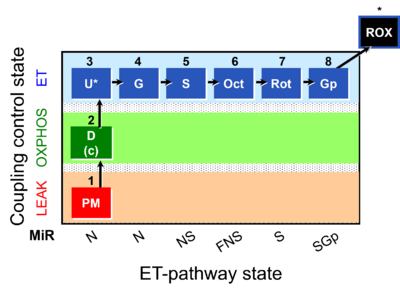 | |||||||||||||||||||||||||||||||||||||||||||||||||||||||
| SUIT-001 O2 ce-pce D003 | RP1 ce-pce | 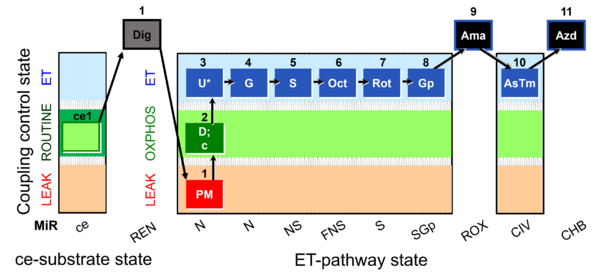 | |||||||||||||||||||||||||||||||||||||||||||||||||||||||
| SUIT-001 O2 ce-pce D004 | RP1 ce-pce blood | 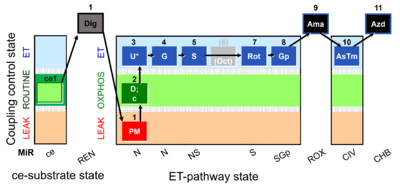 | |||||||||||||||||||||||||||||||||||||||||||||||||||||||
| SUIT-001 O2 mt D001 | RP1 mt | 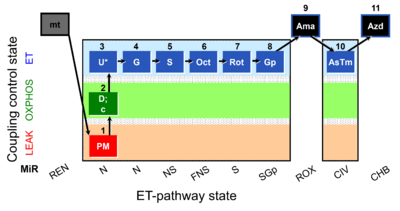 | |||||||||||||||||||||||||||||||||||||||||||||||||||||||
| SUIT-001 O2 pfi D002 | RP1 pfi | 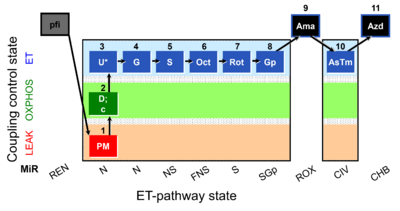 | |||||||||||||||||||||||||||||||||||||||||||||||||||||||
| SUIT-002 | RP2 | 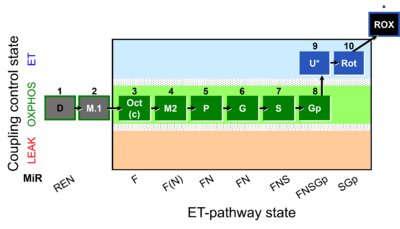 | |||||||||||||||||||||||||||||||||||||||||||||||||||||||
| SUIT-002 O2 ce-pce D007 | RP2 ce-pce | 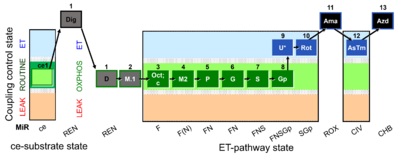 | |||||||||||||||||||||||||||||||||||||||||||||||||||||||
| SUIT-002 O2 ce-pce D007a | RP2 ce-pce blood |  | |||||||||||||||||||||||||||||||||||||||||||||||||||||||
| SUIT-002 O2 mt D005 | RP2 mt | 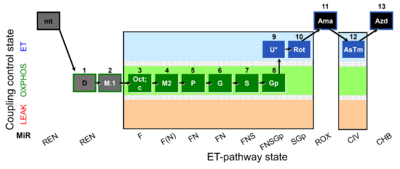 | |||||||||||||||||||||||||||||||||||||||||||||||||||||||
| SUIT-002 O2 pfi D006 | RP2 pfi | 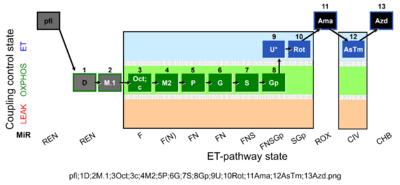 | |||||||||||||||||||||||||||||||||||||||||||||||||||||||
| SUIT-003 | CCP-ce | 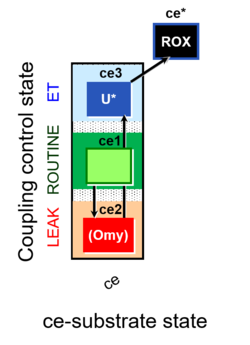 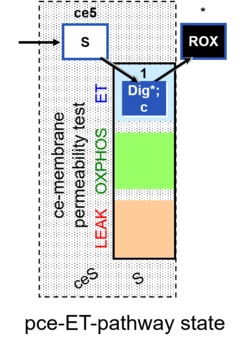 | |||||||||||||||||||||||||||||||||||||||||||||||||||||||
| SUIT-003 AmR ce D017 | CCP-ce S permeability test | 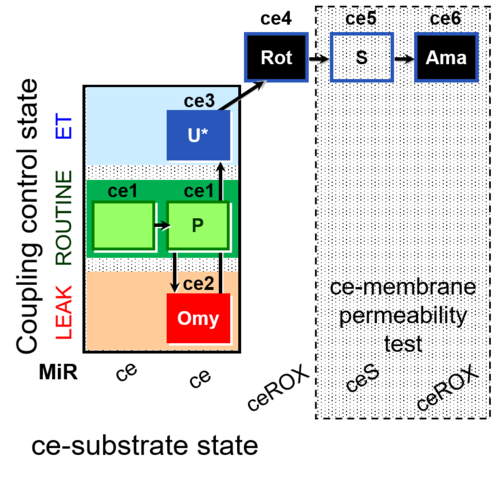 | |||||||||||||||||||||||||||||||||||||||||||||||||||||||
| SUIT-003 AmR ce D058 | AmR effect on ce | 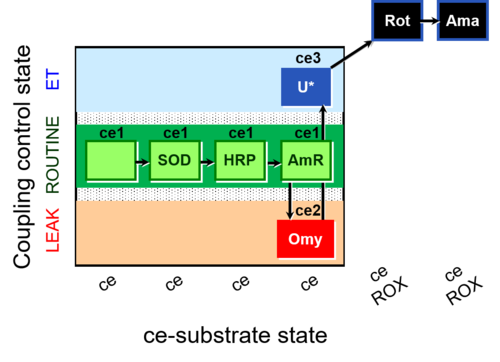 | |||||||||||||||||||||||||||||||||||||||||||||||||||||||
| SUIT-003 AmR ce D059 | AmR effect on ce - control | 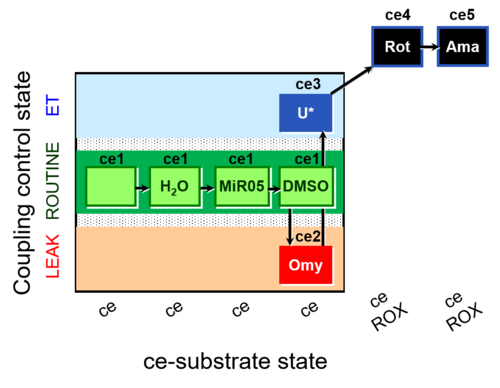 | |||||||||||||||||||||||||||||||||||||||||||||||||||||||
| SUIT-003 Ce1;ce1P;ce3U;ce4Glc;ce5M;ce6Rot;ce7S;1Dig;1c;2Ama;3AsTm;4Azd | cePMGlc,S | 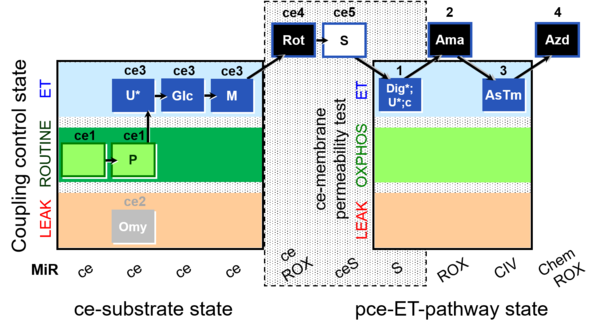 | |||||||||||||||||||||||||||||||||||||||||||||||||||||||
| SUIT-003 Ce1;ce1SD;ce2Omy;ce3U- | FNS(Oct,PGM) | 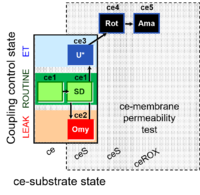 | |||||||||||||||||||||||||||||||||||||||||||||||||||||||
| SUIT-003 Ce1;ce1SD;ce3U;ce4Rot;ce5Ama | ceS | 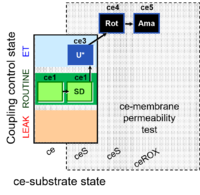 | |||||||||||||||||||||||||||||||||||||||||||||||||||||||
| SUIT-003 Ce1;ce2SD;ce3Omy;ce4U- | FNS(Oct,PGM) | 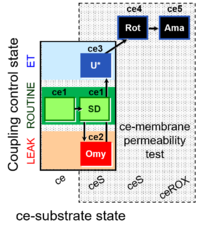 | |||||||||||||||||||||||||||||||||||||||||||||||||||||||
| SUIT-003 Ce1;ce2SD;ce3U;ce4Rot;ce5Ama | ceS | 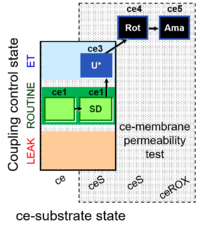 | |||||||||||||||||||||||||||||||||||||||||||||||||||||||
| SUIT-003 Ce1;ce2U;ce3Rot;ce4S;ce5Ama | ceS | 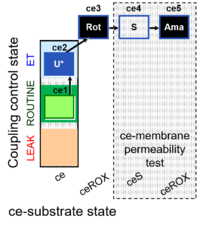 | |||||||||||||||||||||||||||||||||||||||||||||||||||||||
| SUIT-003 Ce1;ce2U- | ce | 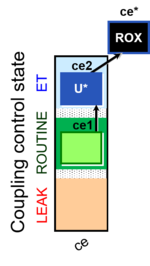 | |||||||||||||||||||||||||||||||||||||||||||||||||||||||
| SUIT-003 Ce1;ce3U;ce4Rot;ce5S;ce6Ama | ceS | 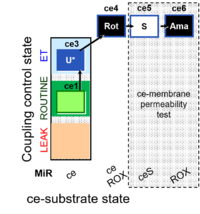 | |||||||||||||||||||||||||||||||||||||||||||||||||||||||
| SUIT-003 Ce1;ce3U- | ce | 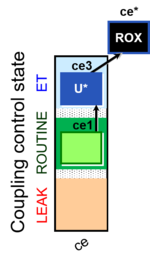 | |||||||||||||||||||||||||||||||||||||||||||||||||||||||
| SUIT-003 O2 ce D009 | CCP-ce short | 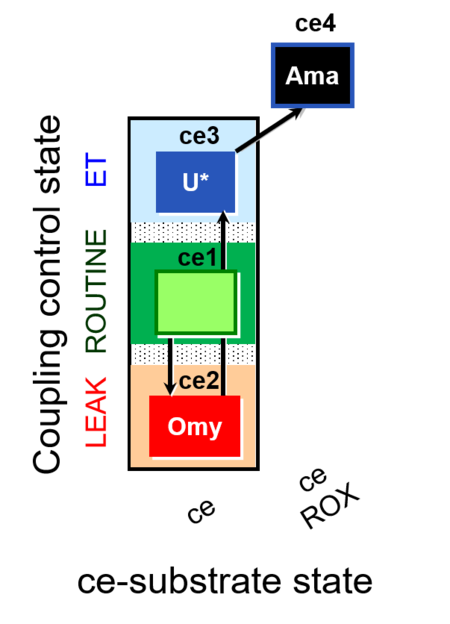 | |||||||||||||||||||||||||||||||||||||||||||||||||||||||
| SUIT-003 O2 ce D012 | CCP-ce(P) | 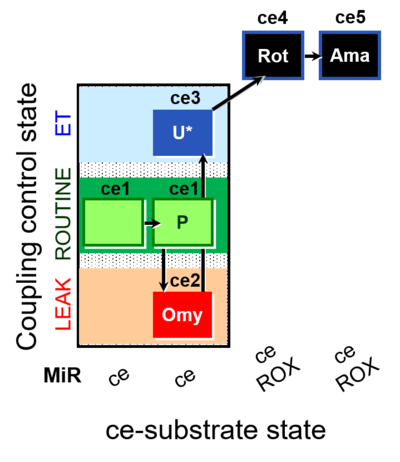 | |||||||||||||||||||||||||||||||||||||||||||||||||||||||
| SUIT-003 O2 ce D028 | CCP-ce S permeability test | 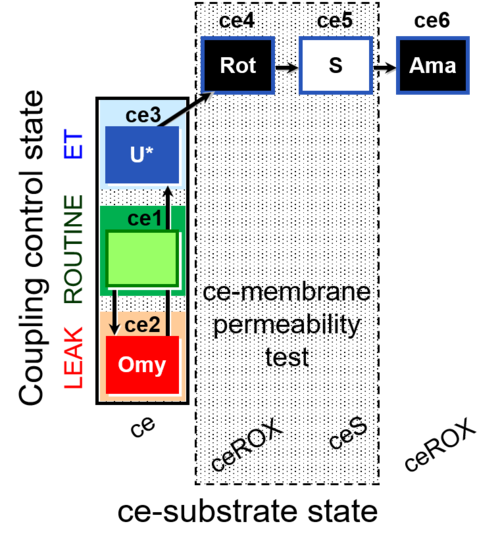 | |||||||||||||||||||||||||||||||||||||||||||||||||||||||
| SUIT-003 O2 ce D037 | CCP-ce Crabtree_R | 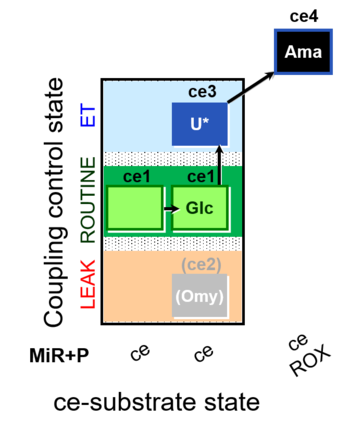 | |||||||||||||||||||||||||||||||||||||||||||||||||||||||
| SUIT-003 O2 ce D038 | CCP-ce Crabtree_E | 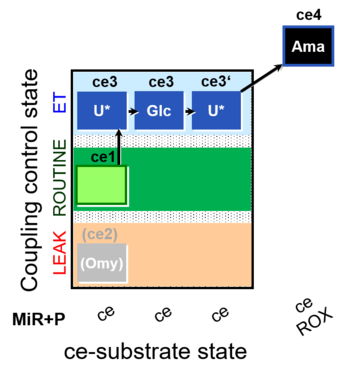 | |||||||||||||||||||||||||||||||||||||||||||||||||||||||
| SUIT-003 O2 ce D039 | CCP-ce microalgae | 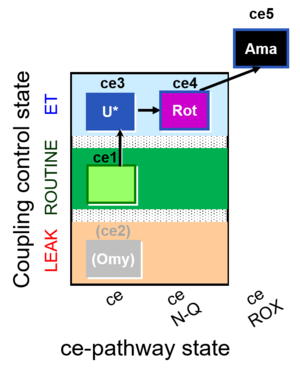 | |||||||||||||||||||||||||||||||||||||||||||||||||||||||
| SUIT-003 O2 ce D050 | CCP-ce Snv | 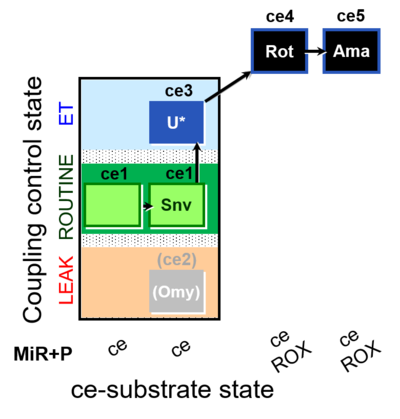 | |||||||||||||||||||||||||||||||||||||||||||||||||||||||
| SUIT-003 O2 ce D060 | CCP-ce Snv,Mnanv | 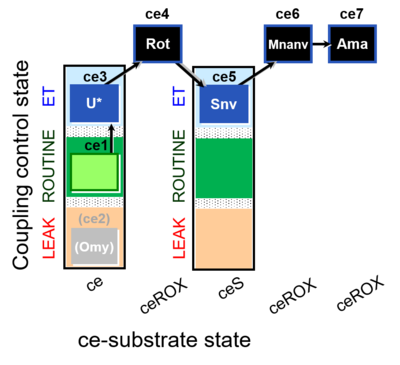 | |||||||||||||||||||||||||||||||||||||||||||||||||||||||
| SUIT-003 O2 ce D061 | CCP-ce Snv,Mnanv - control | 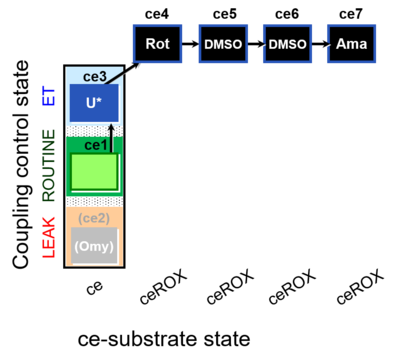 | |||||||||||||||||||||||||||||||||||||||||||||||||||||||
| SUIT-003 O2 ce D062 | CCP-ce Snv - control | 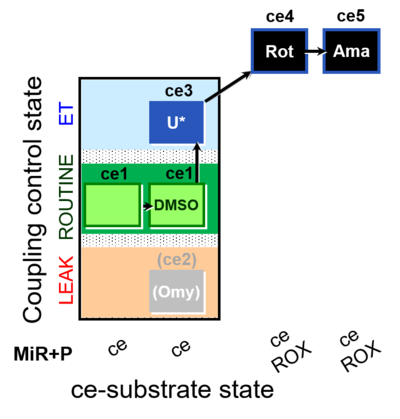 | |||||||||||||||||||||||||||||||||||||||||||||||||||||||
| SUIT-003 O2 ce-pce D013 | CCVP-Glc,M | 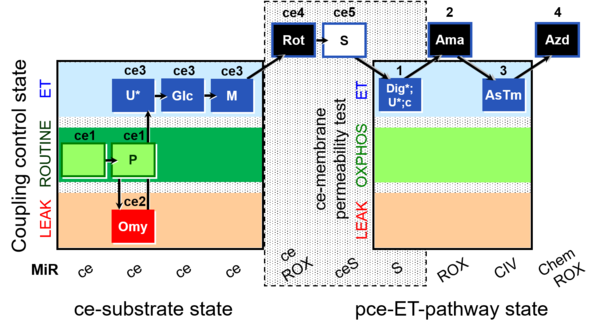 | |||||||||||||||||||||||||||||||||||||||||||||||||||||||
| SUIT-003 O2 ce-pce D018 | CCVP-Glc | 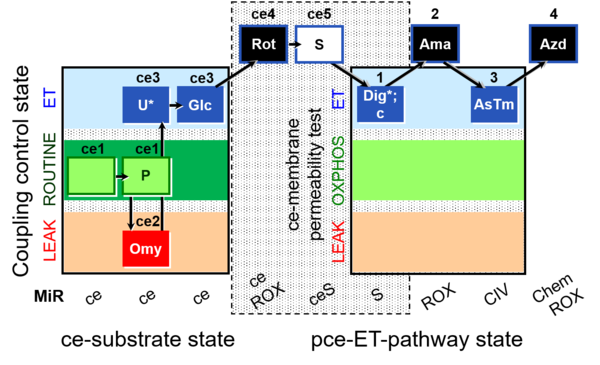 | |||||||||||||||||||||||||||||||||||||||||||||||||||||||
| SUIT-003 O2 ce-pce D020 | CCVP | 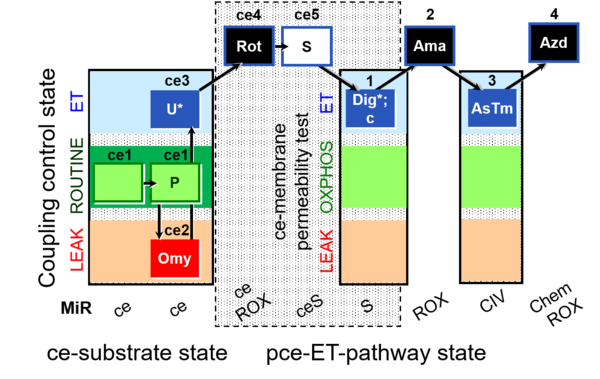 | |||||||||||||||||||||||||||||||||||||||||||||||||||||||
| SUIT-003 pH ce D067 | CCP-Crabtree with glycolysis inhibition | 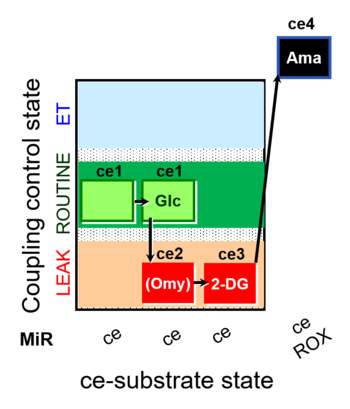 | |||||||||||||||||||||||||||||||||||||||||||||||||||||||
| SUIT-004 | RP1-short | 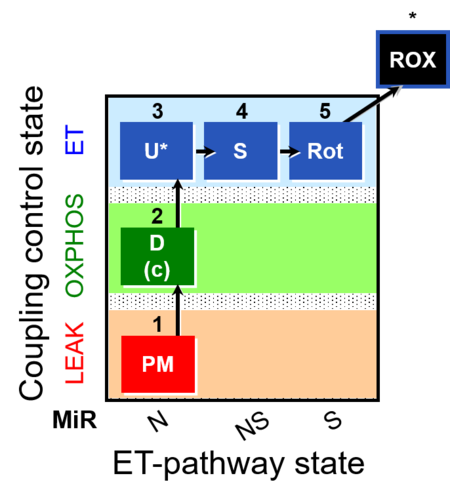 | |||||||||||||||||||||||||||||||||||||||||||||||||||||||
| SUIT-004 O2 pfi D010 | RP1-short pfi | 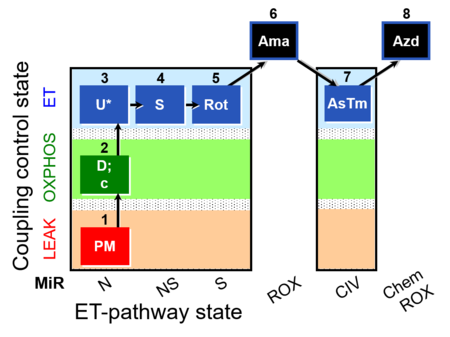 | |||||||||||||||||||||||||||||||||||||||||||||||||||||||
| SUIT-005 | RP2-short | 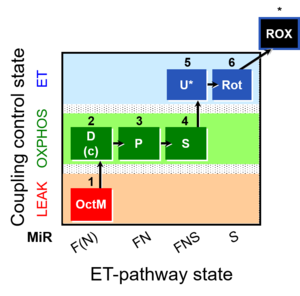 | |||||||||||||||||||||||||||||||||||||||||||||||||||||||
| SUIT-005 O2 pfi D011 | RP2-short pfi | 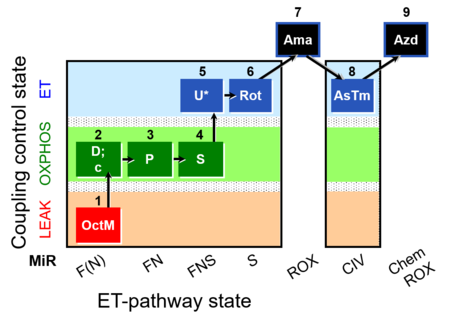 | |||||||||||||||||||||||||||||||||||||||||||||||||||||||
| SUIT-006 | CCP-mtprep | 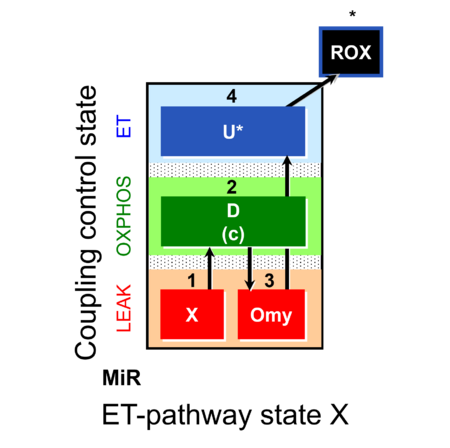 | |||||||||||||||||||||||||||||||||||||||||||||||||||||||
| SUIT-006 02 mt D108 | 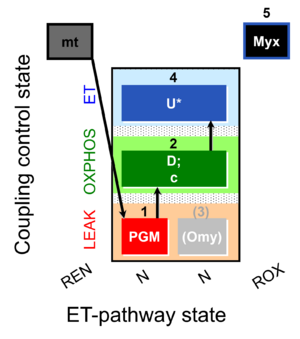 | ||||||||||||||||||||||||||||||||||||||||||||||||||||||||
| SUIT-006 AmR mt D048 | CCP mt PM - AmR | 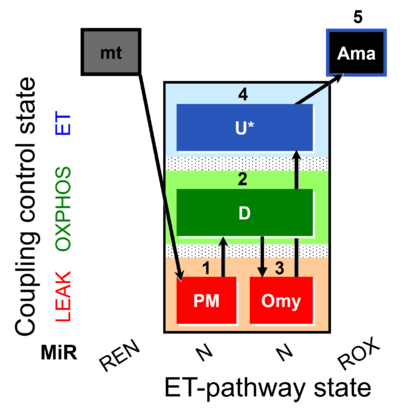 | |||||||||||||||||||||||||||||||||||||||||||||||||||||||
| SUIT-006 Fluo mt D034 | CCP mt PM - Fluo | 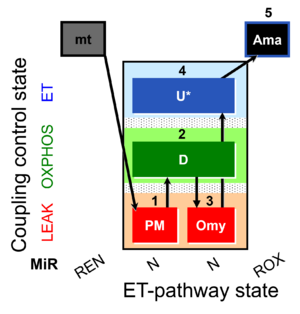 | |||||||||||||||||||||||||||||||||||||||||||||||||||||||
| SUIT-006 MgG ce-pce D085 | CCP MgG ce-pce | 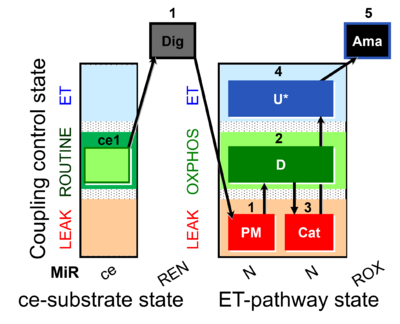 | |||||||||||||||||||||||||||||||||||||||||||||||||||||||
| SUIT-006 MgG mt D055 | CCP MgG mt | 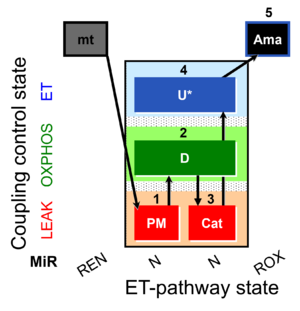 | |||||||||||||||||||||||||||||||||||||||||||||||||||||||
| SUIT-006 NADH mt D084 | 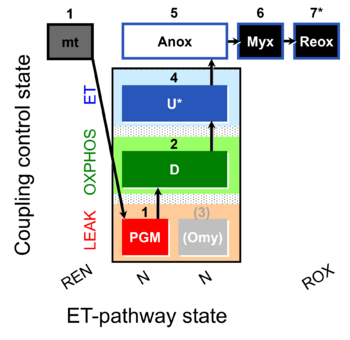 | ||||||||||||||||||||||||||||||||||||||||||||||||||||||||
| SUIT-006 O2 ce-pce D029 | CCP ce-pce PM | 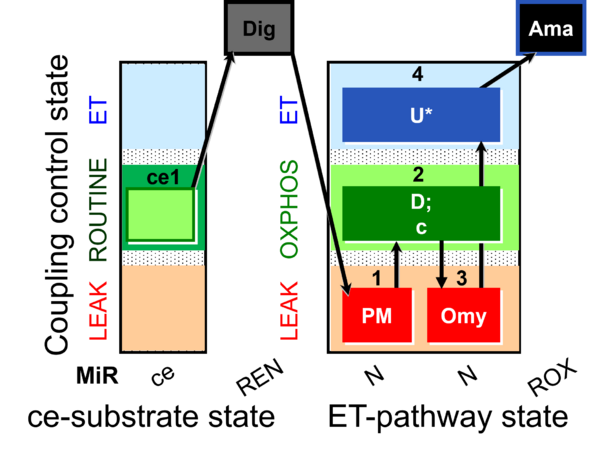 | |||||||||||||||||||||||||||||||||||||||||||||||||||||||
| SUIT-006 O2 mt D022 | CCP mt S(Rot) | 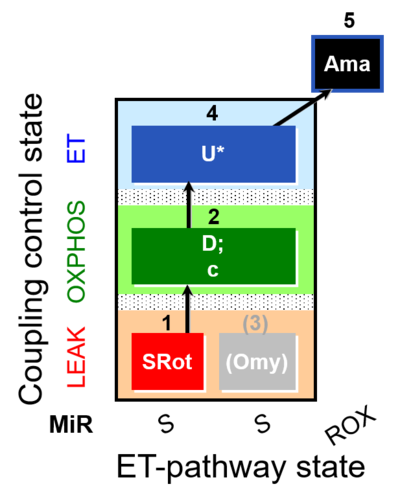 | |||||||||||||||||||||||||||||||||||||||||||||||||||||||
| SUIT-006 O2 mt D047 | CCP mt PM | 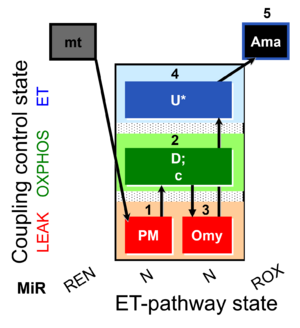 | |||||||||||||||||||||||||||||||||||||||||||||||||||||||
| SUIT-006 Q ce-pce D073 | CCP ce-pce S(Rot) | 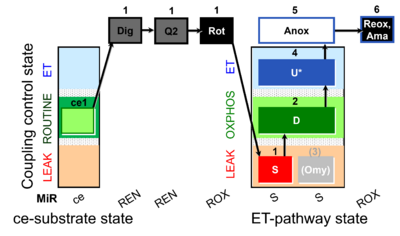 | |||||||||||||||||||||||||||||||||||||||||||||||||||||||
| SUIT-006 Q mt D071 | CCP mt S(Rot) | 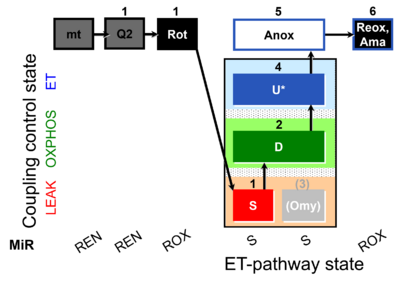 | |||||||||||||||||||||||||||||||||||||||||||||||||||||||
| SUIT-007 | Glutamate anaplerosis | 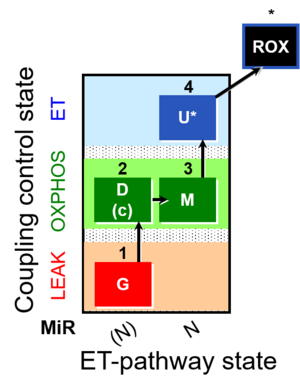 | |||||||||||||||||||||||||||||||||||||||||||||||||||||||
| SUIT-007 O2 ce-pce D030 | Glutamate anaplerotic pathway | 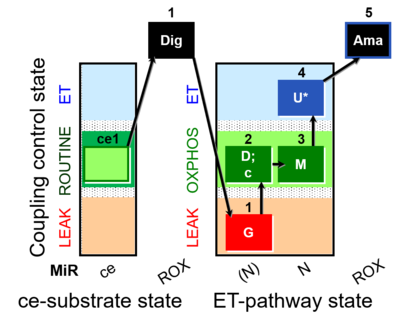 | |||||||||||||||||||||||||||||||||||||||||||||||||||||||
| SUIT-008 | PM+G+S_OXPHOS+Rot_ET | 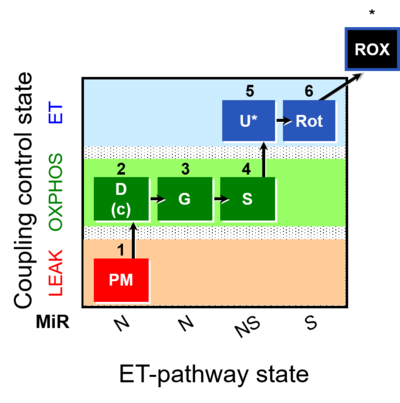 | |||||||||||||||||||||||||||||||||||||||||||||||||||||||
| SUIT-008 O2 ce-pce D025 | Q-junction ce-pce | 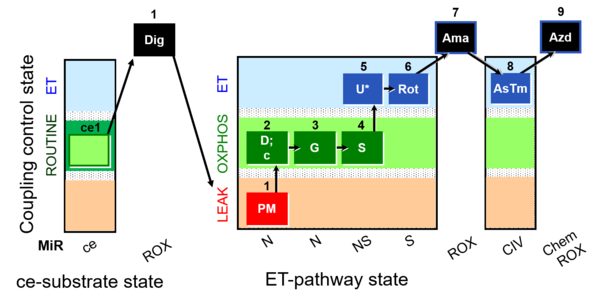 | |||||||||||||||||||||||||||||||||||||||||||||||||||||||
| SUIT-008 O2 mt D026 | Q-junction mtprep | 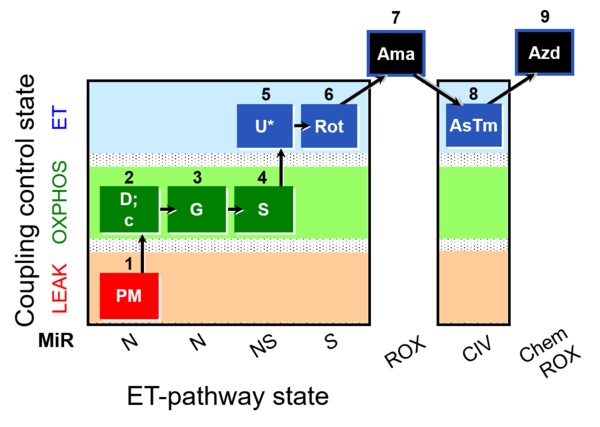 | |||||||||||||||||||||||||||||||||||||||||||||||||||||||
| SUIT-008 O2 pce D25 | NS(PGM) | 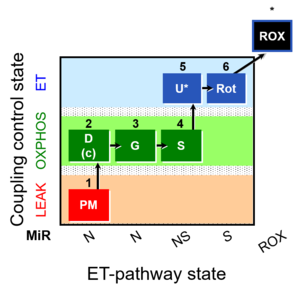 | |||||||||||||||||||||||||||||||||||||||||||||||||||||||
| SUIT-008 O2 pfi D014 | 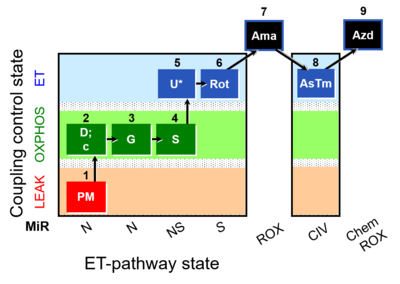 | ||||||||||||||||||||||||||||||||||||||||||||||||||||||||
| SUIT-009 | 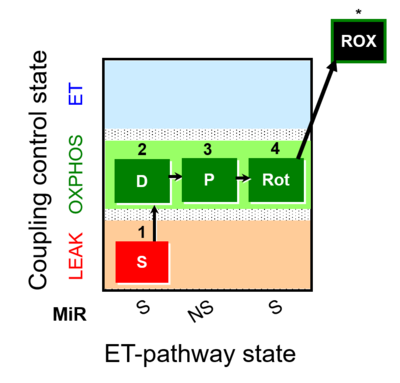 | ||||||||||||||||||||||||||||||||||||||||||||||||||||||||
| SUIT-009 AmR ce-pce D019 | H2O2 RET ce-pce S_L | 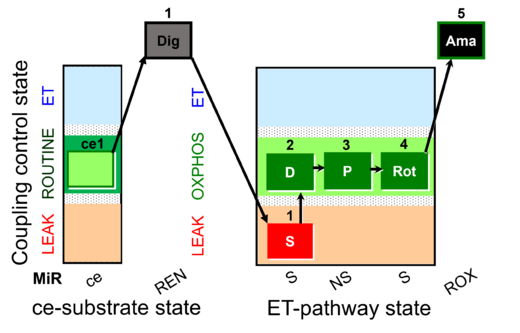 | |||||||||||||||||||||||||||||||||||||||||||||||||||||||
| SUIT-009 AmR mt D021 | H2O2 mtprep | 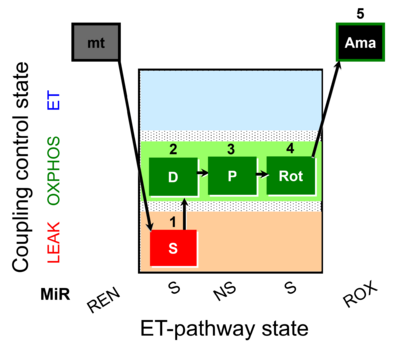 | |||||||||||||||||||||||||||||||||||||||||||||||||||||||
| SUIT-009 O2 ce-pce D016 | 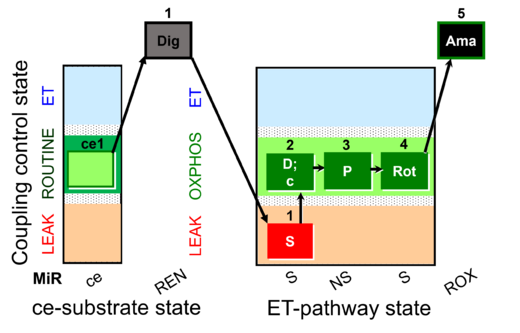 | ||||||||||||||||||||||||||||||||||||||||||||||||||||||||
| SUIT-009 O2 mt D015 | 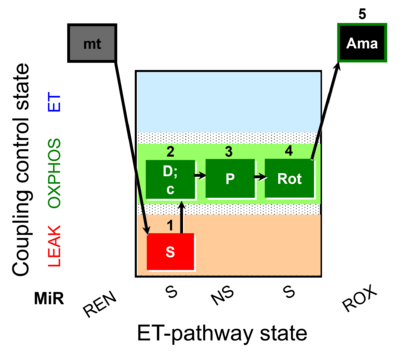 | ||||||||||||||||||||||||||||||||||||||||||||||||||||||||
| SUIT-010 | Digitonin test | 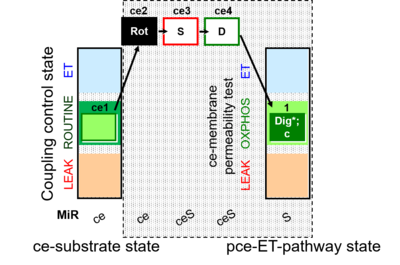 | |||||||||||||||||||||||||||||||||||||||||||||||||||||||
| SUIT-010 O2 ce-pce D008 | Dig titration-pce |  | |||||||||||||||||||||||||||||||||||||||||||||||||||||||
| SUIT-011 | GM+S_OXPHOS+Rot_ET | 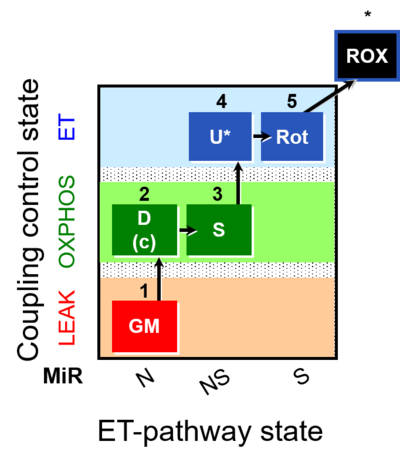 | |||||||||||||||||||||||||||||||||||||||||||||||||||||||
| SUIT-011 O2 pfi D024 | NS physiological maximum capapcity in fibres | 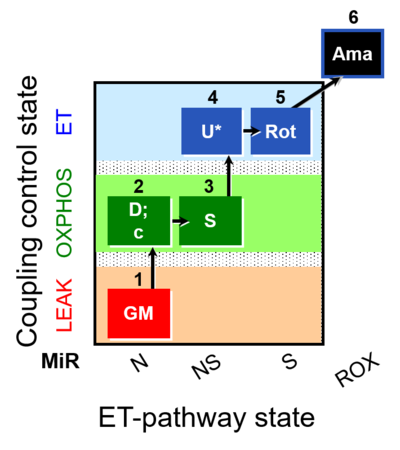 | |||||||||||||||||||||||||||||||||||||||||||||||||||||||
| SUIT-012 | PM+G_OXPHOS | 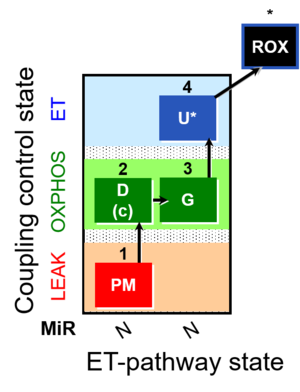 | |||||||||||||||||||||||||||||||||||||||||||||||||||||||
| SUIT-012 O2 ce-pce D052 | N(PGM) | 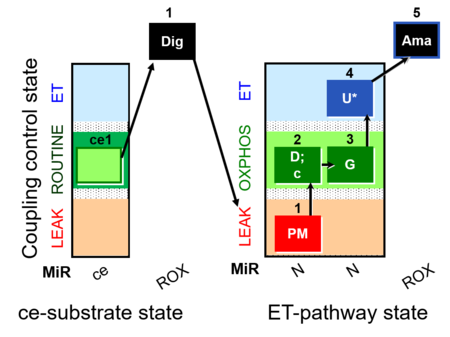 | |||||||||||||||||||||||||||||||||||||||||||||||||||||||
| SUIT-012 O2 mt D027 | N CCP mtprep | 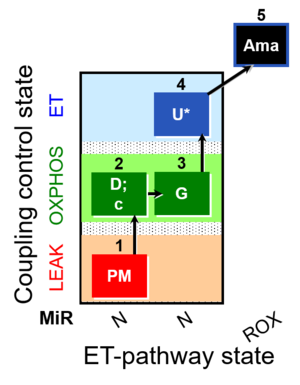 | |||||||||||||||||||||||||||||||||||||||||||||||||||||||
| SUIT-013 | ce | 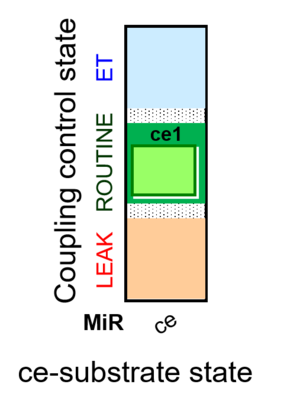 | |||||||||||||||||||||||||||||||||||||||||||||||||||||||
| SUIT-013 AmR ce D023 | O2 dependence of H2O2 production ce | 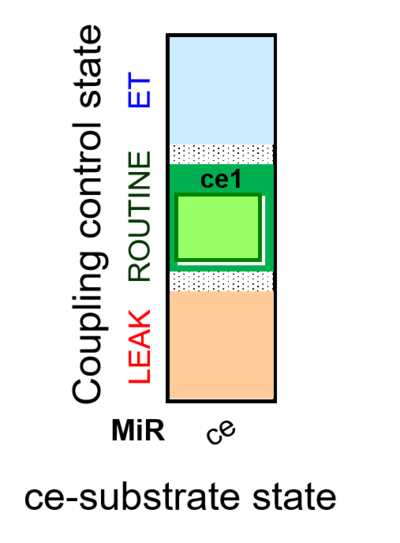 | |||||||||||||||||||||||||||||||||||||||||||||||||||||||
| SUIT-014 | GM+P+S_OXPHOS+Rot_ET | 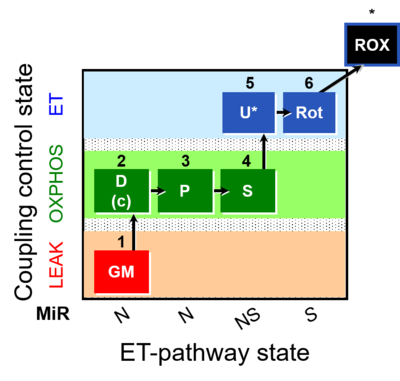 | |||||||||||||||||||||||||||||||||||||||||||||||||||||||
| SUIT-014 O2 pfi D042 | NS(PGM) | 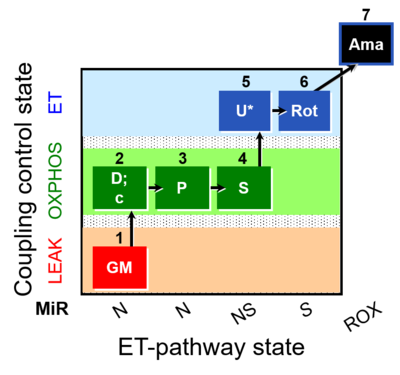 | |||||||||||||||||||||||||||||||||||||||||||||||||||||||
| SUIT-015 | F+G+P+S_OXPHOS+Rot_ET | 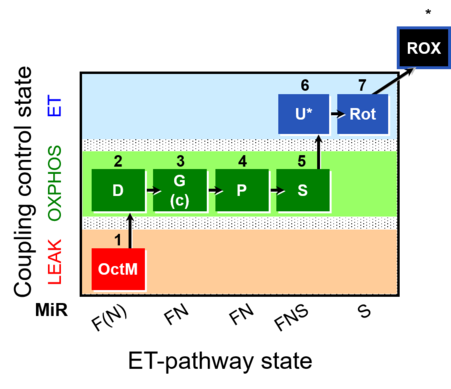 | |||||||||||||||||||||||||||||||||||||||||||||||||||||||
| SUIT-015 O2 pti D043 | FNS(Oct,PGM) | 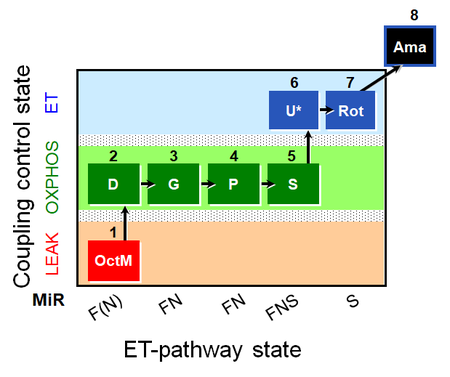 | |||||||||||||||||||||||||||||||||||||||||||||||||||||||
| SUIT-016 | F+G+S+Rot_OXPHOS+Omy | 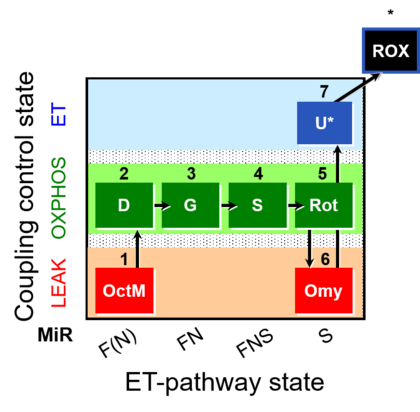 | |||||||||||||||||||||||||||||||||||||||||||||||||||||||
| SUIT-016 O2 pfi D044 | FNS(Oct,GM) | 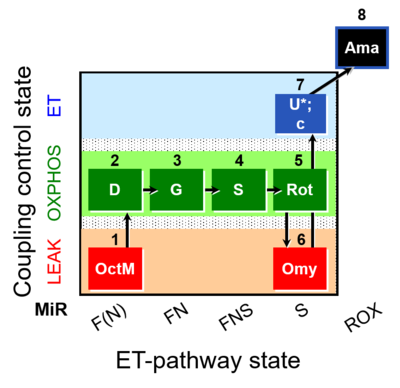 | |||||||||||||||||||||||||||||||||||||||||||||||||||||||
| SUIT-017 | F+G+S_OXPHOS+Rot_ET | 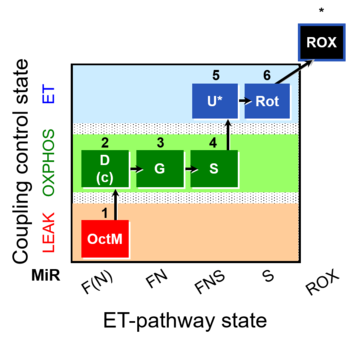 | |||||||||||||||||||||||||||||||||||||||||||||||||||||||
| SUIT-017 O2 mt D046 | FNS(Oct,GM) | 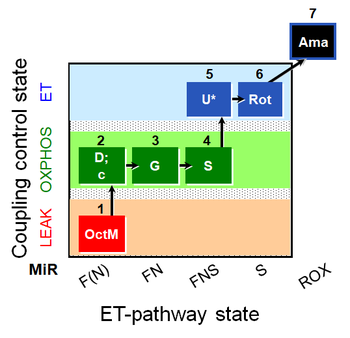 | |||||||||||||||||||||||||||||||||||||||||||||||||||||||
| SUIT-017 O2 pfi D049 | FNS(Oct,GM) |  | |||||||||||||||||||||||||||||||||||||||||||||||||||||||
| SUIT-018 | O2 dependence-H2O2 | 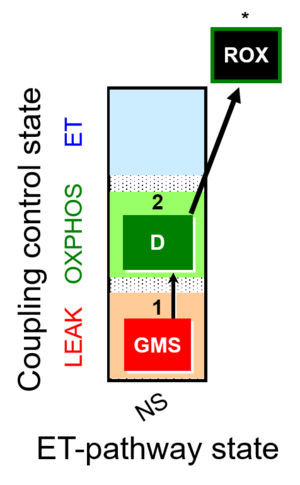 | |||||||||||||||||||||||||||||||||||||||||||||||||||||||
| SUIT-018 AmR ce-pce D068 | O2 dependence-H2O2 | 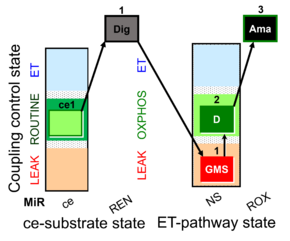 | |||||||||||||||||||||||||||||||||||||||||||||||||||||||
| SUIT-018 AmR mt D031 | O2 dependence-H2O2 | 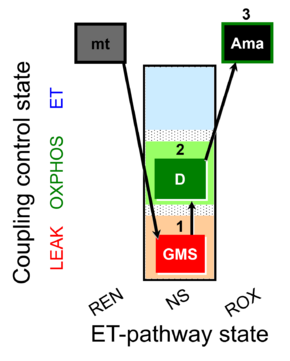 | |||||||||||||||||||||||||||||||||||||||||||||||||||||||
| SUIT-018 AmR mt D040 | NS(GM) |  | |||||||||||||||||||||||||||||||||||||||||||||||||||||||
| SUIT-018 AmR mt D041 | O2 dependence-H2O2 |  | |||||||||||||||||||||||||||||||||||||||||||||||||||||||
| SUIT-018 O2 mt D054 | 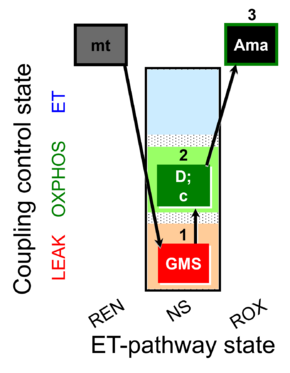 | ||||||||||||||||||||||||||||||||||||||||||||||||||||||||
| SUIT-019 | Pal+Oct+P+G_OXPHOS+S+Rot_ET | 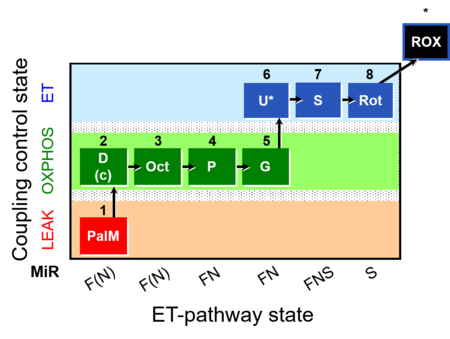 | |||||||||||||||||||||||||||||||||||||||||||||||||||||||
| SUIT-019 O2 pfi D045 | FNS(PalOct,PGM) | 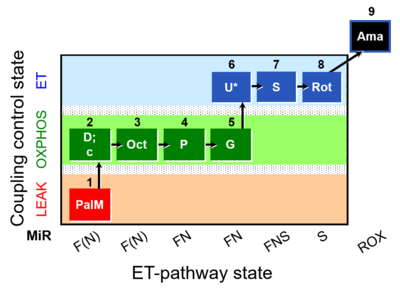 | |||||||||||||||||||||||||||||||||||||||||||||||||||||||
| SUIT-020 | PM+G+S+Rot_OXPHOS+Omy | 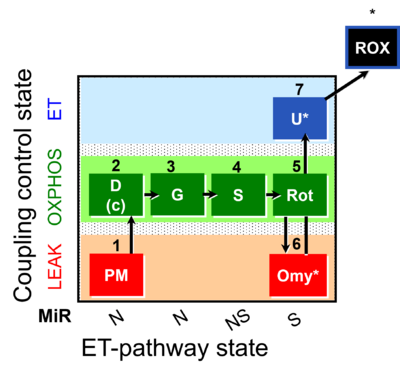 | |||||||||||||||||||||||||||||||||||||||||||||||||||||||
| SUIT-020 Fluo mt D033 | NS(PGM) | 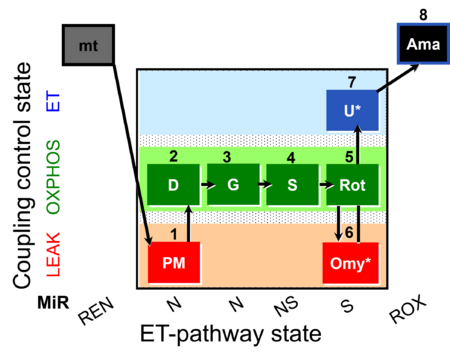 | |||||||||||||||||||||||||||||||||||||||||||||||||||||||
| SUIT-020 O2 mt D032 | Q-junction additivity and respiratory control for membrane potential | 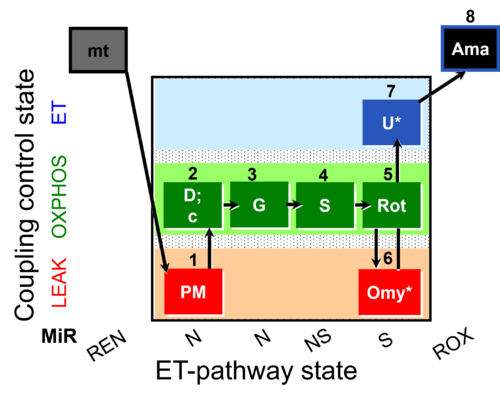 | |||||||||||||||||||||||||||||||||||||||||||||||||||||||
| SUIT-021 | OXPHOS (GM+S+Rot+Omy) | 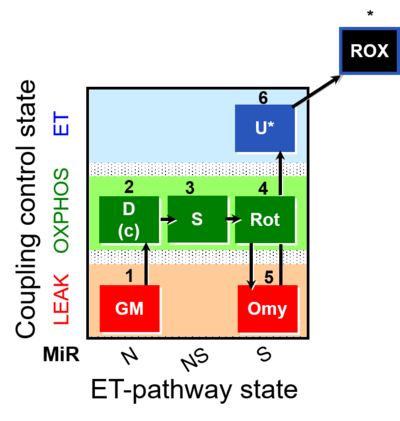 | |||||||||||||||||||||||||||||||||||||||||||||||||||||||
| SUIT-021 Fluo mt D036 | NS(GM) | 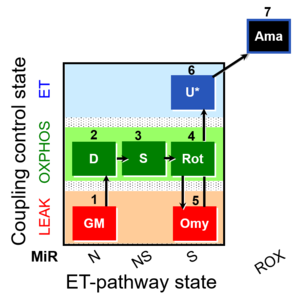 | |||||||||||||||||||||||||||||||||||||||||||||||||||||||
| SUIT-021 O2 mt D035 | NS(GM) | 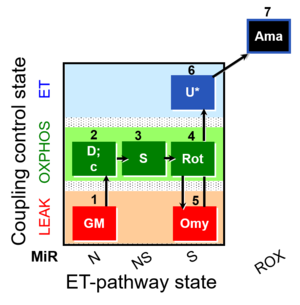 | |||||||||||||||||||||||||||||||||||||||||||||||||||||||
| SUIT-022 | AOX (ce CN+SHAM) | 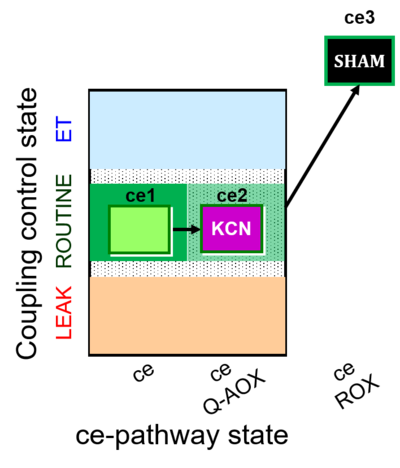 | |||||||||||||||||||||||||||||||||||||||||||||||||||||||
| SUIT-022 O2 ce D051 | AOX-ce CN+SHAM | 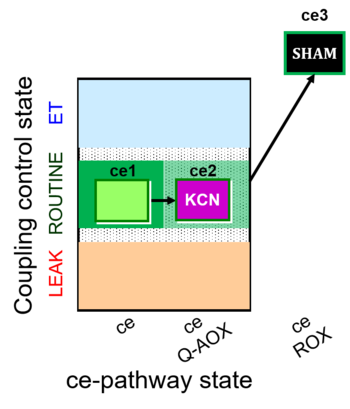 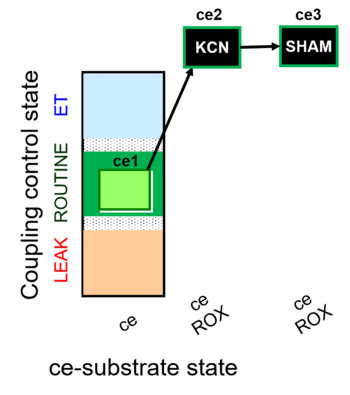 | |||||||||||||||||||||||||||||||||||||||||||||||||||||||
| SUIT-023 | AOX-ce SHAM+CN | 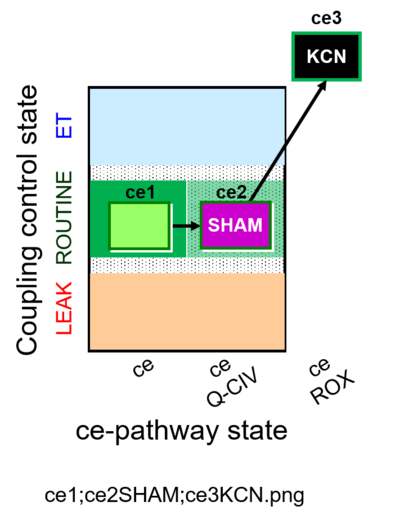 | |||||||||||||||||||||||||||||||||||||||||||||||||||||||
| SUIT-023 O2 ce D053 | AOX-ce SHAM+CN | 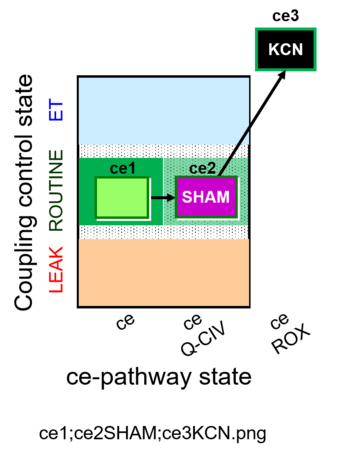 | |||||||||||||||||||||||||||||||||||||||||||||||||||||||
| SUIT-024 | ATPase (PM) | 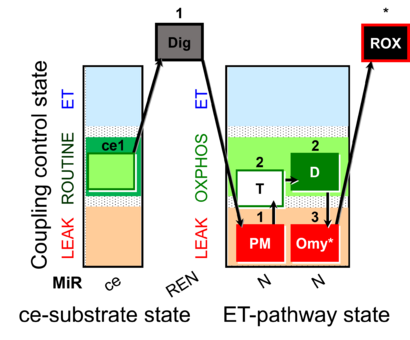 | |||||||||||||||||||||||||||||||||||||||||||||||||||||||
| SUIT-024 O2 ce-pce D056 | N(PM) | 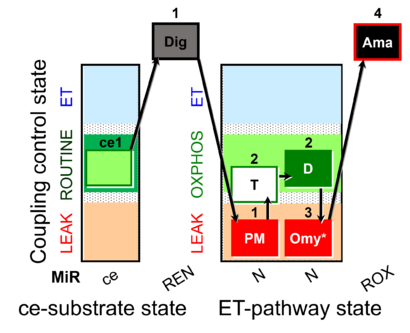 | |||||||||||||||||||||||||||||||||||||||||||||||||||||||
| SUIT-025 | OXPHOS (F+M+P+G+S+Rot) | 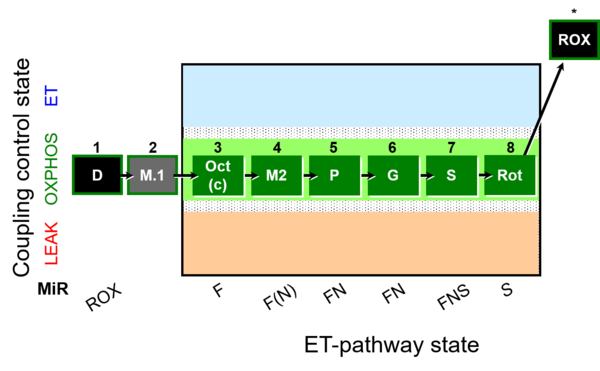 | |||||||||||||||||||||||||||||||||||||||||||||||||||||||
| SUIT-025 O2 mt D057 | FNS(Oct,PGM) | 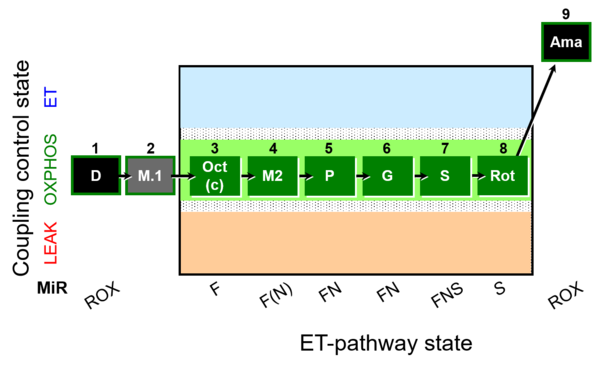 | |||||||||||||||||||||||||||||||||||||||||||||||||||||||
| SUIT-026 | RET | 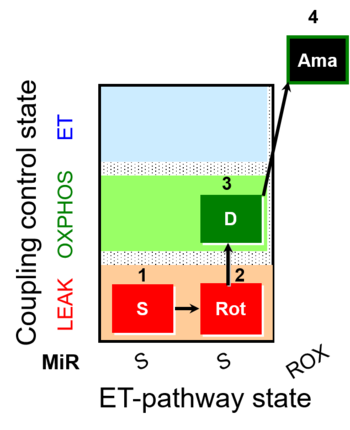 | |||||||||||||||||||||||||||||||||||||||||||||||||||||||
| SUIT-026 AmR ce-pce D087 | RET | 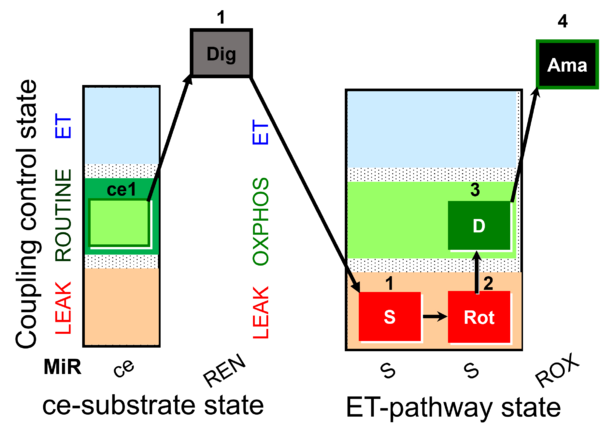 | |||||||||||||||||||||||||||||||||||||||||||||||||||||||
| SUIT-026 AmR mt D064 | RET | 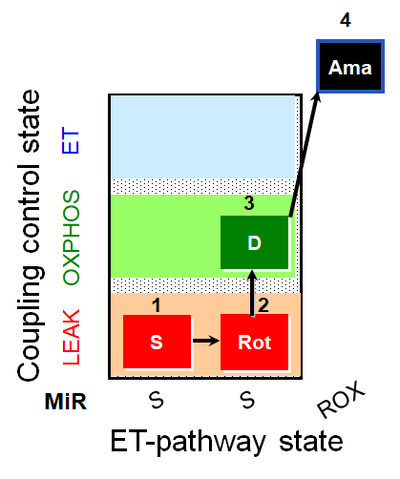 | |||||||||||||||||||||||||||||||||||||||||||||||||||||||
| SUIT-026 AmR mt D077 | RET |  | |||||||||||||||||||||||||||||||||||||||||||||||||||||||
| SUIT-026 O2 ce-pce D088 | RET (respiratory control) of SUIT-026 AmR ce-pce D087 | 400px | |||||||||||||||||||||||||||||||||||||||||||||||||||||||
| SUIT-026 O2 mt D063 | RET (respiratory control) of SUIT-026 AmR mt D064 | 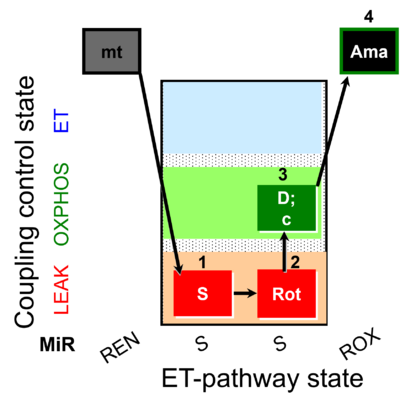 | |||||||||||||||||||||||||||||||||||||||||||||||||||||||
| SUIT-027 | Malate anaplerosis | 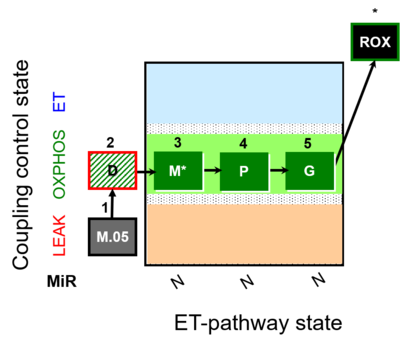 | |||||||||||||||||||||||||||||||||||||||||||||||||||||||
| SUIT-027 O2 ce-pce D065 | Malate anaplerosis | 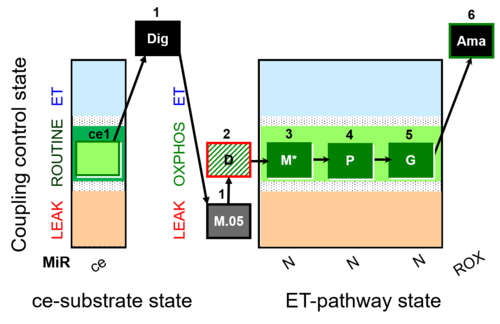 | |||||||||||||||||||||||||||||||||||||||||||||||||||||||
| SUIT-028 | NS(PGM) | 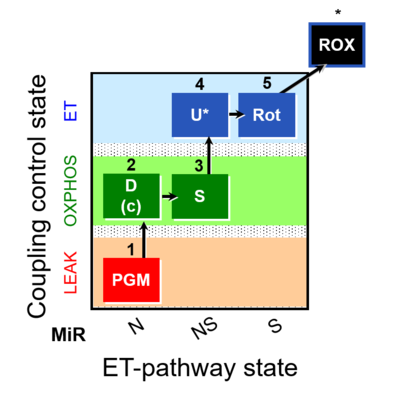 | |||||||||||||||||||||||||||||||||||||||||||||||||||||||
| SUIT-029 O2 mt D066 | QC_imt_PM_T+OXPHOS+c+Omy_ET_G+S+Rot | 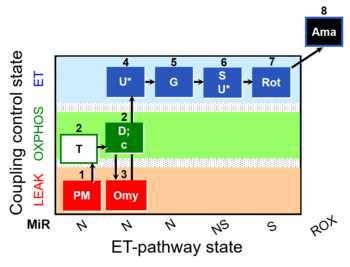 | |||||||||||||||||||||||||||||||||||||||||||||||||||||||
| SUIT-031 | PM+S+Rot | 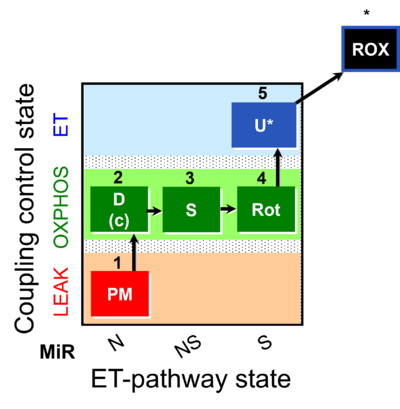 | |||||||||||||||||||||||||||||||||||||||||||||||||||||||
| SUIT-031 O2 ce-pce D079 | PM+S+Rot | 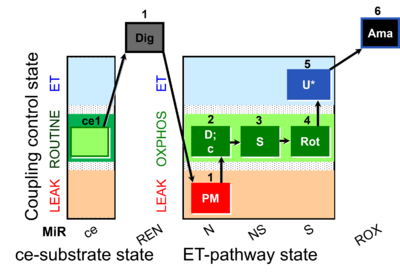 | |||||||||||||||||||||||||||||||||||||||||||||||||||||||
| SUIT-031 O2 mt D075 | PM+S+Rot | 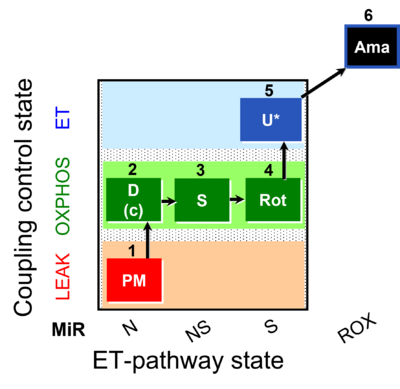 | |||||||||||||||||||||||||||||||||||||||||||||||||||||||
| SUIT-031 Q ce-pce D074 | PM+S+Rot | 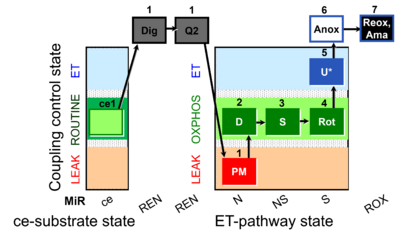 | |||||||||||||||||||||||||||||||||||||||||||||||||||||||
| SUIT-031 Q mt D072 | PM+S+Rot | 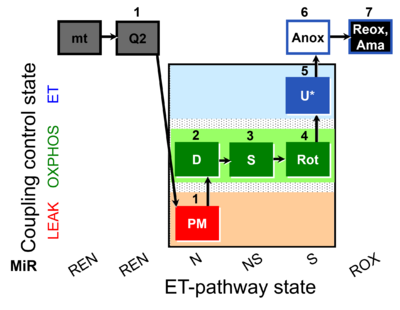 | |||||||||||||||||||||||||||||||||||||||||||||||||||||||
| SUIT-032 NADH mt D078 | 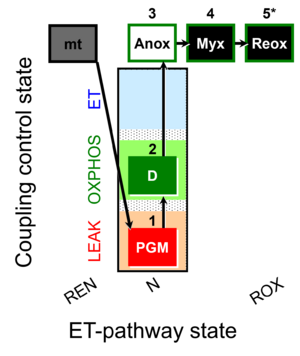 | ||||||||||||||||||||||||||||||||||||||||||||||||||||||||
| SUIT-032 O2 mt D109 | 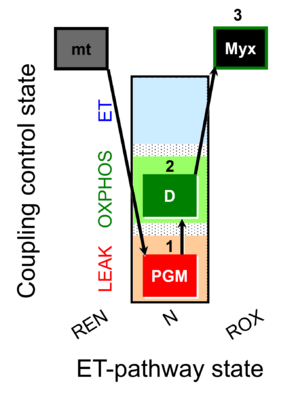 | ||||||||||||||||||||||||||||||||||||||||||||||||||||||||
| SUIT-033 | CCP-mtprep | 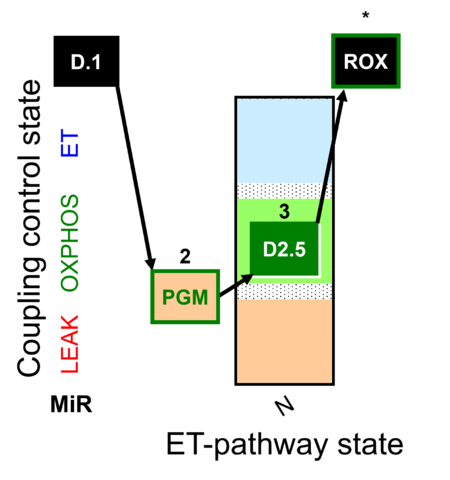 | |||||||||||||||||||||||||||||||||||||||||||||||||||||||
| SUIT-033 NADH mt D081 | 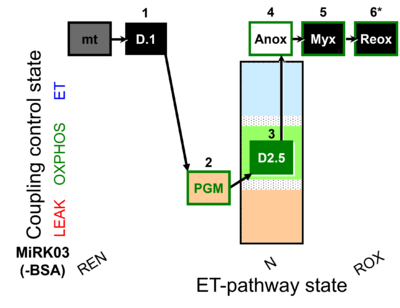 | ||||||||||||||||||||||||||||||||||||||||||||||||||||||||
| SUIT-033 O2 mt D110 |  | ||||||||||||||||||||||||||||||||||||||||||||||||||||||||
| SUIT-034 NADH mt D082 | 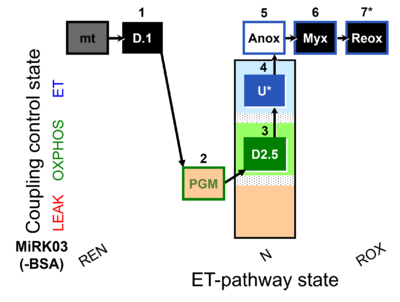 | ||||||||||||||||||||||||||||||||||||||||||||||||||||||||
| SUIT-034 O2 mt D111 | 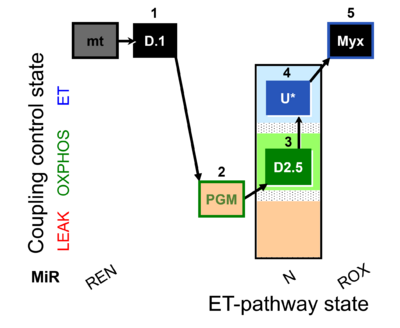 | ||||||||||||||||||||||||||||||||||||||||||||||||||||||||
| SUIT-036 O2 mt D089 | FAO(Pal) & M kinetics | 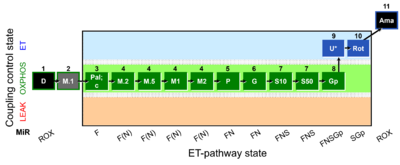 | |||||||||||||||||||||||||||||||||||||||||||||||||||||||
| SUIT-037 O2 mt D090 | FAO(Oct) & M kinetics | 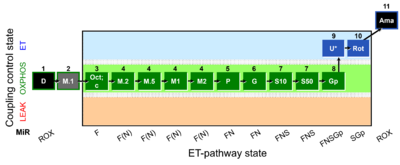 | |||||||||||||||||||||||||||||||||||||||||||||||||||||||
| SUIT-038 O2 mt D091 | FAO control & M kinetics | 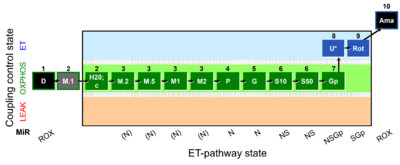 | |||||||||||||||||||||||||||||||||||||||||||||||||||||||
| SUIT-039 O2 mt D092 | FAO and NS-pathways | 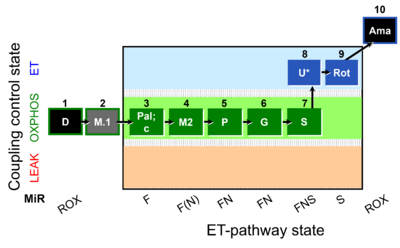 | |||||||||||||||||||||||||||||||||||||||||||||||||||||||
| SUIT-039 O2 pfi D093 | FAO and NS-pathways |  | |||||||||||||||||||||||||||||||||||||||||||||||||||||||
| SUIT-040 O2 mt D094 | FAO and NSGp-pathways | 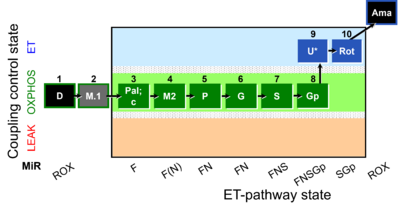 | |||||||||||||||||||||||||||||||||||||||||||||||||||||||
| SUIT-040 O2 pfi D095 | FAO and NSGp-pathways |  | |||||||||||||||||||||||||||||||||||||||||||||||||||||||
| SUIT-041 O2 mt D096 | Optimum [acylcarnitine] test | 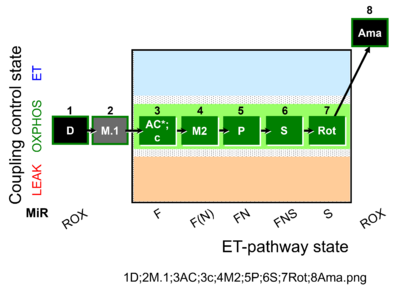 | |||||||||||||||||||||||||||||||||||||||||||||||||||||||
| SUIT: Browse DL-Protocols and templates | A comprehensive library of SUIT protocols including DatLab example traces, instructions, brief explanatory texts, links to relevant pages, representative diagrams and templates for data evaluation can be browsed from inside DatLab 7.4. Click on menu [Protocols]\SUIT: Browse DL-Protocols and templates to open a folder with all the SUIT protocols provided with the DatLab 7.4. DL-Protocols (DLP) for different sample preparations can be chosen to assess multiple sequences of respiratory coupling control and ET-pathway states. DL-Protocols posses unique D## codes and comprise a fixed sequence of events and marks which cannot be changed by the user. However, the users can edit titration volumes and concentrations in the Overview window of a DL-protocol, save the overview, and export the file as a user-specific DL-Protocol [File / Export / A or B: Export DL-Protocol User (*.DLPU)]. In DatLab 7.4, fixed sequence of events and marks can be changed (Skip/Added) in a SUIT protocol by the user. Moreover, editions of text, instructions, concentrations and titration volumes of injections in a specific DL-Protocol can be edited and saved as user-specific DL-Protocol [File]\Export\DL-Protocol User (*.DLPU). For more information, see: Enable DL-Protocol editing. | ||||||||||||||||||||||||||||||||||||||||||||||||||||||||
| SUITbrowser | Use the SUITbrowser to find the substrate-uncoupler-inhibitor-titration (SUIT) protocol most suitable for addressing your research questions. Open the SUITbrowser: http://suitbrowser.oroboros.at/ | ||||||||||||||||||||||||||||||||||||||||||||||||||||||||
| Safranin | Saf | Safranin is one of the most established dyes for measuring mitochondrial membrane potential by fluorometry. It is an extrinsic fluorophore with an excitation wavelength of 495 nm and emission wavelength of 587 nm. Safranin is a potent inhibitor of N-linked respiration and of the phosphorylation system. Synonyms: Safranin O, Safranin Y, Safranin T, Gossypimine, Cotton Red, Basic Red2 | |||||||||||||||||||||||||||||||||||||||||||||||||||||||
| Salicylhydroxamic acid | SHAM | Salicylhydroxamic acid (SHAM; synonym: 2-Hydroxybenzohydroxamic acid N,2-Dihydroxybenzamide) is an inhibitor of the alternative oxidase (AOX). When AOX is blocked by SHAM, electrons are forced through the CIII-cytochrome c oxidase pathway, allowing observation of the operation of the CIII-CIV pathway without AOX activity. | |||||||||||||||||||||||||||||||||||||||||||||||||||||||
| Sample | s | A sample is one or more parts taken from an ensemble that is studied. A sample is either stored for later quantification or prepared and possibly separated into subsamples, which are enclosed in a system for qualitative or quantitative investigation. A pure sample S is a pure gas, pure liquid or pure solid of a defined elementary entity-type. A pure biological sample is a cell type, tissue, or organism without its solid, liquid or gaseous environment. Then the system used to investigate sample S contains only entities of entity-type S, and the volume VS [L] and mass mS [kg] of the pure (sub)sample S are identical to the volume V and mass m of the experimental system. A pure sample S may be mixed with other components to be investigated as a solution, mixture, or suspension, indicated by the symbol s in contrast to the pure sample S. A sample s is obtained in combination with other components, such that the volume Vs [L] and mass ms [kg] of the sample s are larger than the volume VS and mass mS of the pure sample S. For example, the number of cells Nce [Mx] can be counted in a sample s of a cell suspension, whereas the mass mce [mg] of cells requires a pure sample S of cells to be measured on a mass-balance. Clarity of statistical representation is improved, if the symbol N is used for the number of primary samples taken from a study group, and the symbol n is used for the number of subsamples studied as technical repeats. | |||||||||||||||||||||||||||||||||||||||||||||||||||||||
| Sample - DatLab | F3 | In the window Sample and medium, information is entered and displayed for the sample and medium. Entries can be edited any time during the experiment or during post-experiment analysis. All related results are recalculated instantaneously with the new parameters. | |||||||||||||||||||||||||||||||||||||||||||||||||||||||
| Sample Holder | Sample Holder - to protect susceptible samples from being damaged by stirring of the medium in the 2.0 mL O2k-chamber. | ||||||||||||||||||||||||||||||||||||||||||||||||||||||||
| Sample mass concentration | Cms | Sample mass concentration is Cms = ms·V-1 [kg·m-3]. | |||||||||||||||||||||||||||||||||||||||||||||||||||||||
| Sample size | Sample size is an ambiguous term. (1) Size can be measured as an extensive quantity in terms of mass mS [kg], volume VS [m3], or energy ES [J] of a pure sample S. If the sample consists of countable entities X, the count NX [x] in sample S is an elementary quantity, in contrast to the extensive quantities used as indicators of sample size. (2) In statistics, however, the term 'sample size' does not refer to the individual sample, but indicates on the contrary the number of samples investigated or sampled from a study group. N is the number of samples collected and assayed to obtain representative statistical information on the population. The population size defines the upper limit of the statistical sample size. | ||||||||||||||||||||||||||||||||||||||||||||||||||||||||
| Sample type | An experimental sample type is the object of an experiment. A sample type is defined by the specifications of the population and by a specific sample preparation (see MitoPedia: Sample preparations). | ||||||||||||||||||||||||||||||||||||||||||||||||||||||||
| Saponin | Sap | Saponin is a mild detergent that permeabilizes plasma membranes completely and selectively due to their high cholesterol content, whereas mt-membranes with lower cholesterol content are affected only at higher concentrations. Applied for permeabilization of muscle fibres. | |||||||||||||||||||||||||||||||||||||||||||||||||||||||
| Sarcopenia | Low muscle strength is a key characteristic of sarcopenia due to low muscle quantity and quality, with poor physical performance at severe sarcopenia. Older age may be defined as the age group when sarcopenia becomes a common burden. | ||||||||||||||||||||||||||||||||||||||||||||||||||||||||
| Save - DatLab | Ctrl+S | Save a DatLab file. When disconnected from the O2k, save any changes made under the identical file name overwriting the previous file. Such changes do not affect the raw data of the experiment, but relate to calibrations, experimental protocol, marks, events, and layout. | |||||||||||||||||||||||||||||||||||||||||||||||||||||||
| Save and Disconnect | Ctrl+F4 | Save and Disconnect: Stops data acquisition and disconnects from the O2k (only for DatLab 7) | |||||||||||||||||||||||||||||||||||||||||||||||||||||||
| Save as - DatLab | Save as a DatLab file. When disconnected from the O2k, save the file under a different file name, optionally in a different directory. | ||||||||||||||||||||||||||||||||||||||||||||||||||||||||
| Scalar | A scalar is a pysicochemical quantity that is fully described by its magnitude. A potential difference, differences of concentration or pressure are scalars, whereas a potential gradient is a vector. Similarly, the protonmotive force and metabolic oxygen flux are scalars, whereas the fundamental forces of physics and velocity are vectors. | ||||||||||||||||||||||||||||||||||||||||||||||||||||||||
| Scaling - DatLab | F6 | Scaling a graph in DatLab provides flexibility to vary the display of the plots and create Graph layouts. It allows viewing a data plot in differently scaled graphs, zooming the signal and time scales, and scrolling along the axes of the graph provide maximum information on the current experiment. This does not influence the format of stored data. Different ranges for the axes change the appearance of data dramatically. It is highly recommended to use reference layouts. »Compare: Select plots - DatLab. | |||||||||||||||||||||||||||||||||||||||||||||||||||||||
| Scaling factor | Scaling factor determines the multiplication factor that is applied to the time derivative of the signal. | ||||||||||||||||||||||||||||||||||||||||||||||||||||||||
| Scattering | Most biological samples do not consist simply of pigments but also particles (e.g. cells, fibres, mitochondria) which scatter the incident light. The effect of scattering is an apparent increase in absorbance due to an increase in pathlength and the loss of light scattered in directions other than that of the detector. Two types of scattering are encountered. For incident light of wavelength λ, Rayleigh scattering is due to particles of diameter < λ (molecules, sub-cellular particles). The intensity of scatter light is proportional to λ4 and is predominantly backward scattering. Mie scattering is caused by particles of diameter of the order of or greater than λ (tissue cells). The intensity of scatter light is proportional to 1/λ and is predominantly forward scattering. | ||||||||||||||||||||||||||||||||||||||||||||||||||||||||
| Science - the concept | Science | As per the 2017 UNESCO Recommendation on Science and Scientific Researchers, the term ‘science’ signifies the enterprise whereby humankind, acting individually or in small or large groups, makes an organized attempt, in cooperation and in competition, by means of the objective study of observed phenomena and its validation through sharing of findings and data and through peer review, to discover and master the chain of causalities, relations or interactions; brings together in a coordinated form subsystems of knowledge by means of systematic reflection and conceptualization; and thereby furnishes itself with the opportunity of using, to its own advantage, understanding of the processes and phenomena occurring in nature and society. | |||||||||||||||||||||||||||||||||||||||||||||||||||||||
| Science Citation Index | SCI | The Science Citation Index SCI offers bibliographical access to a curated collection of journals across 178 scientific disciplines. The SCI provides gold-standard lists of established journals. | |||||||||||||||||||||||||||||||||||||||||||||||||||||||
| Scissors\stainless steel\straight Tip\sharp | Scissors\stainless steel\straight Tip\sharp. | ||||||||||||||||||||||||||||||||||||||||||||||||||||||||
| Screwdriver allen wrench | Screwdriver allen wrench, a standard component of the O2k-FluoRespirometer and O2k-sV-Module. | ||||||||||||||||||||||||||||||||||||||||||||||||||||||||
| Search for defective O2k components | The 2-chamber design of the O2k helps to search for defective O2k components, by switching components linked to O2k chambers A and B between sides A and B. | ||||||||||||||||||||||||||||||||||||||||||||||||||||||||
| Second | s | The second, symbol s, is the SI unit of time. It is defined by taking the fixed numerical value of the caesium frequency ∆νCs, the unperturbed ground-state hyperfine transition frequency of the caesium 133 atom, to be 9 192 631 770 when expressed in the unit Hz, which is equal to s−1. | |||||||||||||||||||||||||||||||||||||||||||||||||||||||
| Select O2k - DatLab | Select O2k - DatLab | ||||||||||||||||||||||||||||||||||||||||||||||||||||||||
| Select plots - DatLab | Ctrl+F6 | In the pull-down menue [Graph], Select plots opens the Graph layout window 'Plots'. For each graph, the plots shown with the Y1 or Y2 axis can be selected, axis labels and line styles can be defined, the unit for the calibrated signal can be changed, Flux/Slope can be chosen to be displayed as Flux per volume or as normalized specific flux/flow, the background correction can be switched on or off, and the channel can be selectively displayed as the raw signal. Graph layouts can be selected and loaded or a Graph layout may be saved. »Compare: Scaling - DatLab. | |||||||||||||||||||||||||||||||||||||||||||||||||||||||
| Selectivity | Selectivity is the ability of a sensor or method to quantify accurately and specifically the analyte or analytes in the presence of other compounds. | ||||||||||||||||||||||||||||||||||||||||||||||||||||||||
| Semiquinone | Semiquinone is an unstable free radical derived either from the removal of one hydrogen atom with its electron from quinol (reduced form), or by the addition of a single hydrogen atom to a quinone (oxidized form). | ||||||||||||||||||||||||||||||||||||||||||||||||||||||||
| Sensitivity | Sensitivity refers to the response obtained for a given amount of analyte and is often denoted by two factors: the limit of detection and the limit of quantification. | ||||||||||||||||||||||||||||||||||||||||||||||||||||||||
| Serbian Society for Mitochondrial and Free Radical Physiology | SSMFRP | The Serbian Society for Mitochondrial and Free Radical Physiology (SSMFRP) was established in 2008 as a national Society and has 150 members who gather research in the fields of molecular biology, biochemistry, medicine, chemistry, agriculture, physics and other related disciplines. The SSMFRP was founded as a voluntary non-governmental and non-profit association for researchers whose goal is to support the creative improvement of scientific knowledge about the physiology of mitochondria and free radicals, support for the development of modern research approaches and integration of fundamental research in order to better understand the role of free radicals in pathophysiological states, as well as promoting scientific knowledge in the country and abroad. | |||||||||||||||||||||||||||||||||||||||||||||||||||||||
| Serial port | Serial port describes the connection between O2k and Computer. With the USB-Cable 2.0\Type A-B connected, select Serial port in the Connection window. Depending on the O2k series, it is possible to connect with a Serial port or USB port. | ||||||||||||||||||||||||||||||||||||||||||||||||||||||||
| Set Power O2k number - DatLab | Create an identifier for your Power O2k instrument. Since it is displayed in the status panel (bottom right) and in axis labels, it should be a short code, any combination of digits and letters is allowed. | ||||||||||||||||||||||||||||||||||||||||||||||||||||||||
| Shipping an O2k | For shipping an O2k or parts, standard operating procedures have to be followed to avoid damage of the instrument and unexpected delays. The O2k-Main Unit must be shipped only in Packing\O2k-Box 1, without O2k-chambers and without OroboPOS. Two O2k-Chamber Holders, two OroboPOS-Holders and two OroboPOS-Connectors are attached to the O2k-Main Unit for transport. | ||||||||||||||||||||||||||||||||||||||||||||||||||||||||
| Shredder-Accessory Box | Shredder-Accessory Box: for storage and shipping of Shredder accessories. | ||||||||||||||||||||||||||||||||||||||||||||||||||||||||
| Shredder-Tube Cap Tool | Shredder-Tube Cap Tool: component of PBI-Shredder O2k-Set, not available as a single item. | ||||||||||||||||||||||||||||||||||||||||||||||||||||||||
| Shredder-Tube Ram Tool | Shredder-Tube Ram Tool: component of PBI-Shredder O2k-Set. | ||||||||||||||||||||||||||||||||||||||||||||||||||||||||
| Shredder-Tubes | Shredder-Tubes: consisting of Shredder Tube FT500-PS with Lysis Disk, serrated Shredder-Tube Ram Tool and Shredder-Tube Cap Tool, coral colour (Box of 100) and Shredder Tube FT500-PMS with Lysis Disk, serrated Shredder-Tube Ram Tool and Shredder-Tube Cap Tool, coral colour (Box of 100). There is no difference between the white and the coral shredder tubes, except that the white tubes are also approved for high pressure. | ||||||||||||||||||||||||||||||||||||||||||||||||||||||||
| Sides | There are many sides of the term 'side' in our language system. Inside and outside are the sides that are separated by the system boundaries of an experimental system. + and - are the two sides of numbers separated by 0. Pages in books have opposite sides or front sides versus backsides. Many fundamental terms have opposite sides of the meaning, thus spanning the entire message in the space between their apparently contrasting sides, and transforming the paradox as a perspective into the unified whole, the full, the complete. On the other side, such fundamental terms are fully understood only after realization of the opposite sides of their meaning — treasures discovered in the etymological origins of the word. It makes sense to open all our senses to comprehend the bright side and the dark side of things. Whereas the student sais "I see a black sheep", Zen decides "You see, that one side of the sheep is black". This is the message to consider both sides before choosing sides, besides overcoming a one-sided point of view. Don't rock side-to-side, but get immersed deeply inside things to see the upsides and downsides of every thing or anything, and more so of nothing. Inside is the insight, for insiders and outsiders of the feedback loop of an Ouroboros. | ||||||||||||||||||||||||||||||||||||||||||||||||||||||||
| Signal line | see O2k signal line | ||||||||||||||||||||||||||||||||||||||||||||||||||||||||
| Signal-to-noise ratio | S/N | The signal to noise ratio is the ratio of the power of the signal to that of the noise. For example, in fluorimetry it would be the ratio of the square of the fluorescence intensity to the square of the intensity of the background noise. | |||||||||||||||||||||||||||||||||||||||||||||||||||||||
| Sirtuins | Sirt | Sirtuins are NAD+-dependent deacetylases which play a prominent role as metabolic regulators. Their dependence on intracellular levels of NAD+ (NAD+ activates sirtuin activity, whereas NADH inhibits it) makes them suitable as sensors that can detect cellular energy status. » MiPNet article | |||||||||||||||||||||||||||||||||||||||||||||||||||||||
| Slit width | The slit width determines the amount of light entering the spectrofluorometer or spectrophotometer. A larger slit reduces the signal-to-noise ratio but reduces the wavelength resolution. | ||||||||||||||||||||||||||||||||||||||||||||||||||||||||
| Smart Fluo-Sensor Blue | Smart Fluo-Sensor Blue: Excitation LED 465 nm (dominant wavelenght) with short pass filter, emission (red) with long pass filter, individual sensors are calibrated with sensor-specific memory and direct input into DatLab 7 to obtain reproducible light intensities with different sensors, including photodiode, Filter-Cap equipped with Filter Set Saf for measurement of mitochondrial membrane potential with safranin and rhodamine 123. Filter Set MgG / CaG for Magnesium green and Calcium green measurements are included. | ||||||||||||||||||||||||||||||||||||||||||||||||||||||||
| Smart Fluo-Sensor Green | Smart Fluo-Sensor Green: Excitation LED 525 nm (dominant wavelength) with short pass filter, emission (red) with long pass filter, individual sensors are calibrated with sensor-specific memory and direct input into DatLab 7 to obtain reproducible light intensities with different sensors, including photodiode, Filter-Cap equipped with Filter Set AmR for Amplex UltraRed and TMRM measurements when delivered. | ||||||||||||||||||||||||||||||||||||||||||||||||||||||||
| SmartPOS |
The SmartPOS is a polarographic oxygen sensor (POS), for O2k-Series J and XB onward, with an amperometric mode of operation. The SmartPOS combines the previous OroboPOS and OroboPOS-Connector and is automatically recognized by the software DatLab 8. Combination of the previously separated components in one piece, protects the electrical connections. The SmartPOS is, like the OroboPOS, a Clark type polarographic oxygen sensor (POS), which remains the gold standard for measuring dissolved oxygen in biomedical, environmental and industrial applications over a wide dynamic oxygen range. The SmartPOS meets the highest quality criteria in terms of linearity, stability and sensitivity of the signal. The sensor consists of a gold cathode, a silver/silverchloride anode and a KCl electrolyte reservoir separated from the sample by a 25 µm membrane (FEP). With application of a polarization voltage (0.8 V), a current is obtained as an amperometric signal. | ||||||||||||||||||||||||||||||||||||||||||||||||||||||||
| Smoothing | Various methods of smoothing can be applied to improve the signal-to-noise ratio. For instance, data points recorded over time [s] or over a range of wavelengths [nm] can be smoothed by averaging n data points per interval. Then the average of the n points per smoothing interval can be taken for each successively recorded data point across the time range or range of the spectrum to give a n-point moving average smoothing. This method decreases the noise of the signal, but clearly reduces the time or wavelength resolution. More advanced methods of smoothing are applied to retain a higher time resolution or wavelength resolution. | ||||||||||||||||||||||||||||||||||||||||||||||||||||||||
| Society for Heart and Vascular Metabolism | SHVM | The Society for Heart and Vascular Metabolism (SHVM) The Society for Heart and Vascular Metabolism was founded in 2001, with the intent of providing a forum for the free exchange of ideas by a group of investigators that had a special interest in the multiple roles of intermediary metabolism in the cardiovascular system. An important aim of the Society is to foster interactions between young investigators and senior scientists and our meetings are deliberately designed to maximize these interactions. There is growing recognition across many areas of scientific investigation and in the cardiovascular arena of the importance of metabolic homeostasis. The Society for Heart and Vascular Metabolism intends to remain at the vanguard of this rapidly expanding area. | |||||||||||||||||||||||||||||||||||||||||||||||||||||||
| Society for Mitochondrial Research and Medicine - India | SMRM-India | The Society for Mitochondria Research and Medicine - India (SMRM-India) is a nonprofit organization of scientists, clinicians and academicians. The purpose of SMRM is to foster research on basic science of mitochondria, mitochondrial pathogenesis, prevention, diagnosis and treatment through out India and abroad. | |||||||||||||||||||||||||||||||||||||||||||||||||||||||
| Sodium fluoride | NaF | Sodium fluoride (NaF) is used in combination with beryllium sulfate to form beryllium trifluoride (BeF3−), to inhibit the ATP synthase if it is exposed by disruption of the mitochondrial membranes. | |||||||||||||||||||||||||||||||||||||||||||||||||||||||
| Sodium orthovanadate | VO4 | Sodium vanadate (Na3VO4) is used as an ATPase inhibitor. | |||||||||||||||||||||||||||||||||||||||||||||||||||||||
| Sodium phosphate buffer | Na-PB | Sodium phosphate buffer, Na-PB, for HRR with freeze-dried baker´s yeast. | |||||||||||||||||||||||||||||||||||||||||||||||||||||||
| Solubility | SG | The solubility of a gas, SG, is defined as concentration divided by partial pressure, SG = cG·pG-1. | |||||||||||||||||||||||||||||||||||||||||||||||||||||||
| Solution protocols | The following definition lacks quality control and is not applied as such in the Oroboros QM. Solution protocols contain media, substrates, uncouplers, inhibitors used in SUIT protocols, permeabilization agents, etc. | ||||||||||||||||||||||||||||||||||||||||||||||||||||||||
| Solutions | A solution is {Quote}: A liquid or solid phase containing more than one substance, when for convenience one (or more) substance, which is called the solvent, is treated differently from the other substances, which are called solutes. When, as is often but not necessarily the case, the sum of the mole fractions of solutes is small compared with unity, the solution is called a dilute solution. A superscript attached to the ∞ symbol for a property of a solution denotes the property in the limit of infinite dilution {end of Quote: IUPAC Gold Book}. » MiPNet article | ||||||||||||||||||||||||||||||||||||||||||||||||||||||||
| Specific quantity | Specific quantities are obtained when the extensive quantity is divided by system size, in contrast to intensive quantities. The adjective specific before the name of an extensive quantity is often used to mean divided by mass (Cohen et al 2008). A mass-specific quantity (e.g., mass-specific flux is flow divided by mass of the system) is independent of the extent of non-interacting homogenous subsystems. If mass-specific oxygen flux is constant and independent of system size (expressed as mass), then there is no interaction between the subsystems. The well-established scaling law in respiratory physiology reveals a strong interaction of oxygen consumption and body mass by the fact that mass-specific basal metabolic rate (oxygen flux) does not increase proportionally and linearly with body mass. Maximum mass-specific oxygen flux, VO2max, is less mass-dependent across a large range of body mass of different mammalian species (Weibel and Hoppeler 2005). | ||||||||||||||||||||||||||||||||||||||||||||||||||||||||
| Spectrofluorometer | A spectrofluorometer makes use of a spectrometer to measure and analyse the fluorescent emission spectra from a fluorophore. It will typically differ from an absorbance spectrophotometer in that it will have a larger slit width (to increase sensitivity) and use a longer integration time. The configuration of the illuminating and receiving optics also differ from spectrophotometry in that the excitation source is directed perpendicularly to the position of the emission detector so that the intensity of the excitation signal reaching the detector is minimised. | ||||||||||||||||||||||||||||||||||||||||||||||||||||||||
| Spectrophotometer | A spectrophotometer is an instrument that consists of an entrance slit, a dispersion device (see dispersion devices and a detector for the purpose of measuring the intensity of light emerging from a sample across a given wavelength range. A light source is also necessary in order for the instrument to function, and this may be located within the instrument or from an external source using lightguides or other optics. | ||||||||||||||||||||||||||||||||||||||||||||||||||||||||
| Spectrophotometry | Spectrophotometry is the use of a spectrophotometer to measure the transmittance, reflectance or remittance of a material as a function of wavelength. See transmission spectrophotometry, reflectance spectrophotometry and remission spectrophotometry. | ||||||||||||||||||||||||||||||||||||||||||||||||||||||||
| Spectroscopy | Spectroscopy is a broader term than spectrophotometry in that it is concerned with the investigation and measurement of spectra produced when matter interacts with or emits any form electromagnetic radiation. | ||||||||||||||||||||||||||||||||||||||||||||||||||||||||
| Speed | v [m·s-1] | Speed, v [m·s-1], is the distance, s [m], covered by a particle per unit time, irrespective of geometrical direction in space. Therefore, speed is not a vector, in contrast to velocity. v = ds/dt [m·s-1] | |||||||||||||||||||||||||||||||||||||||||||||||||||||||
| Spermidine | Spermidine is a polycationic bioactive polyamine mainly found in wheat germ, soybean and various vegetables, involved in the regulation of mitophagy, cell growth and cell death. Like other caloric restriction mimetics, spermidine is effective in cardioprotection, neuroprotection and anticancer immunosuppression by preserving mitochondrial function and control of autophagy. | ||||||||||||||||||||||||||||||||||||||||||||||||||||||||
| Spline | Some spectrofluorometer or spectrophotometer software offers the possibility of spline interpolation of the spectral data points. This makes use of a polynomial (the number of spline points is entered by the user) to interpolate the curve between the data points. | ||||||||||||||||||||||||||||||||||||||||||||||||||||||||
| Stability | Stability determines the accuracy of intensity and absorbance measurements as a function of time. Instability (see drift introduces systematic errors in the accuracy of fluorescence and absorbance measurements. | ||||||||||||||||||||||||||||||||||||||||||||||||||||||||
| Stand alone application | A Stand alone application is computer software that can work offline, i.e. does not necessarily require network connection to function or does not even provide the possibility to connect to a network. | ||||||||||||||||||||||||||||||||||||||||||||||||||||||||
| Standard | A standard is an established norm or requirement in regard to a defined system. It can consist of a formal document that establishes uniform criteria, methods, processes and practices.See also Harmonized standard. | ||||||||||||||||||||||||||||||||||||||||||||||||||||||||
| Standard operating procedures | SOP | The following definition is incomplete. Standard operating procedures are a set of step-by-step instructions to achieve a predictable, standardized, desired result often within the context of a longer overall process. | |||||||||||||||||||||||||||||||||||||||||||||||||||||||
| Start recording - DatLab | In DatLab 8, the start recording window allows to select protocols or settings before starting recording a file. | ||||||||||||||||||||||||||||||||||||||||||||||||||||||||
| Startup O2k-Respirometer | Startup O2k-Respirometer - the experimental system complete for basic high-resolution respirometry (HRR). The O2k-Respirometer includes the O2k-Main Unit with stainless steel housing, O2k-Assembly Kit, two OroboPOS (polarographic oxygen sensors) and OroboPOS-Service Kit, DatLab software, the ISS-Integrated Suction System, the O2k-Titration Set, and for performing high-resolution respirometry with reduced amounts of biological sample the O2k-sV-Module.
| ||||||||||||||||||||||||||||||||||||||||||||||||||||||||
| State 1 | State 1 is the first respiratory state in an oxygraphic protocol described by Chance and Williams (1955), when isolated mitochondria are added to mitochondrial respiration medium containing oxygen and inorganic phosphate, but no ADP and no reduced respiratory substrates. In State 1, LEAK respiration may be supported to some extent by undefined endogenous substrates, which are oxidized and slowly exhausted. After oxidation of endogenous substrates, only residual oxygen consumption remains (ROX). | ||||||||||||||||||||||||||||||||||||||||||||||||||||||||
| State 2 | ROXD |  Substrate limited state of residual oxygen consumption, after addition of ADP to isolated mitochondria suspended in mitochondrial respiration medium in the absence of reduced substrates (ROXD). Residual endogenous substrates are oxidized during a transient stimulation of oxygen flux by ADP. The peak – supported by endogenous substrates – is, therefore, a pre-steady state phenomenon preceding State 2. Subsequently oxygen flux declines to a low level (or zero) at the steady State 2 (Chance and Williams 1955). ADP concentration (D) remains high during ROXD. Substrate limited state of residual oxygen consumption, after addition of ADP to isolated mitochondria suspended in mitochondrial respiration medium in the absence of reduced substrates (ROXD). Residual endogenous substrates are oxidized during a transient stimulation of oxygen flux by ADP. The peak – supported by endogenous substrates – is, therefore, a pre-steady state phenomenon preceding State 2. Subsequently oxygen flux declines to a low level (or zero) at the steady State 2 (Chance and Williams 1955). ADP concentration (D) remains high during ROXD. | |||||||||||||||||||||||||||||||||||||||||||||||||||||||
| State 3 | P | ||||||||||||||||||||||||||||||||||||||||||||||||||||||||
| State 3u | E | ||||||||||||||||||||||||||||||||||||||||||||||||||||||||
| State 4 | LT | ||||||||||||||||||||||||||||||||||||||||||||||||||||||||
| State 5 | State 5 is the respiratory state obtained in a protocol with isolated mitochondria after a sequence of State 1 to State 4, when the concentration of O2 is depleted in the closed oxygraph chamber and zero oxygen (the anaerobic state) is reached (Chance and Williams, 1955; Table I). State 5 is defined in the original publication in two ways: State 5 may be obtained by antimycin A treatment or by anaerobiosis (Chance and Williams, 1955; page 414). Antimycin A treatment yields a State 5 equivalent to a state for measurement of residual oxygen consumption, ROX (which may also be induced by rotenone+myxothiazol; Gnaiger 2009). Setting State 5 equivalent to ROX or anoxia (Chance and Williams 1955) can be rationalized only in the context of measurement of cytochrome redox states, whereas in the context of respiration State 5 is usually referred to as anoxic. | ||||||||||||||||||||||||||||||||||||||||||||||||||||||||
| Static head | L |
In a completely coupled system, not only the output flux but also the input flux are zero at static head, which then is a state of ergodynamic equilibrium (Gnaiger 1993b). Whereas the output force is maximum at ergodynamic equilibrium compensating for any given input force, all forces are zero at thermodynamic equilibrium. Flows are zero at both types of equilibria, hence entropy production or power (power = flow x force) are zero in both cases, i.e. at thermodynamic equilibrium in general, and at ergodynamic equilibrium of a completely coupled system at static head. | |||||||||||||||||||||||||||||||||||||||||||||||||||||||
| Statistical significance | p | It is advisable to replace levels of statistical significance (*, **, ***) by simply stating the actual p-values. | |||||||||||||||||||||||||||||||||||||||||||||||||||||||
| Status line | see O2k status line | ||||||||||||||||||||||||||||||||||||||||||||||||||||||||
| Steady state | A system is in a steady state if the state variables of a dynamic system do not change over time due to exchange processes with the environment, which compensate for internal dissipative transformations — such as chemical reactions or diffusion — and thus prevent any changes of the system and externalize dissipative changes to the environment. The dynamic nature of the steady state differentiates it from the thermodynamic equilibrium state. {Quote} Steady states can be obtained only in open systems, in which changes by internal transformations, e.g., O2 consumption, are instantaneously compensated for by external fluxes across the system boundary, e.g., O2 supply, thus preventing a change of O2 concentration in the system (Gnaiger 1993). Mitochondrial respiratory states monitored in closed systems satisfy the criteria of pseudo-steady states for limited periods of time, when changes in the system (concentrations of O2, fuel substrates, ADP, Pi, H+) do not exert significant effects on metabolic fluxes (respiration, phosphorylation). Such pseudo-steady states require respiratory media with sufficient buffering capacity and substrates maintained at kinetically-saturating concentrations, and thus depend on the kinetics of the processes under investigation. {end of Quote: BEC 2020.1}. Whereas fluxes may change at a steady state over time, concentrations are maintained constant. The 'respiratory steady state' (Chance and Williams 1955) is characterized by constant fluxes (O2 flux, H2O2 flux) and measured variables of state (cytochrome redox states, Q redox state, NADH redox state, mitochondrial membrane potential). High-resolution respirometry allows for the measurement of several parameters (e.g. O2 flux, H2O2 flux, mitochondrial membrane potential) at pseudo-steady states, when changes of concentrations in the closed system do not exert any control on fluxes. Combination with the Titration-Injection microPump (TIP2k) allows operation with programmable titration regimes at steady-state ADP concentration (Gnaiger 2001), oxygen concentration (oxystat mode; Gnaiger et al 2000, Harrison et al 2015) or steady-state pH (pH-stat more), yielding an expanded flexibility in experimental design by combining the technical advantages of closed and open systems approaches. | ||||||||||||||||||||||||||||||||||||||||||||||||||||||||
| Stirrer A on/off | F11 | Toggles between stirrer on/off in the left O2k-chamber, returning to the pre set stirrer speed. | |||||||||||||||||||||||||||||||||||||||||||||||||||||||
| Stirrer B on/off | F12 | Toggles between stirrer on/off in the right O2k-chamber, returning to the pre set stirrer speed. | |||||||||||||||||||||||||||||||||||||||||||||||||||||||
| Stirrer power | F11, F12 | Stirrer power is switched on and off during operation of the Oroboros O2k in DatLab by pressing [F11] (left chamber) and [F12] (right chamber), respectively. This is functional only with a stirrer bar added to each O2k chamber. | |||||||||||||||||||||||||||||||||||||||||||||||||||||||
| Stirrer test | F9 | A stirrer test is performed in the Oroboros O2k for quick evaluation of the performance of the OroboPOS and for dynamic calibration. Stirring is stopped in both chambers and restarted after a selected period. The default period is 30 s, for experiments at 37 °C. At lower experimental temperature, this period should be prolonged (60 s at 25 °C). In the SOP (O2k Quality Control) for the O2 sensor test, the stirrer test is performed in the 'open' chamber in conjunction with Air calibration. In general, the stirrer test can be performed equally with an open or closed chamber. Upon automatic re-start of the stirrer (On), the increase of the oxygen signal should be rapid and monoexponential. | |||||||||||||||||||||||||||||||||||||||||||||||||||||||
| Stirrer-Bar sV\white PVDF\11.5x6.2 mm | Stirrer-Bar sV\white PVDF\11.5x6.2 mm, operated in the 0.5-mL O2k-Chamber sV at constant stirring speed (standard is 750 rpm, or 12.5 Hz), to provide optimum mixing of the sample in the aqueous medium and ensure a stable signal of the polarographic oxygen sensor (OroboPOS) placed in a position of maximum current of the medium. | ||||||||||||||||||||||||||||||||||||||||||||||||||||||||
| Stirrer-Bar\black PEEK\15x6 mm | Stirrer-Bar\black PEEK\15x6 mm, for 2-mL O2k-Chamber, for specific optical applications to minimize optical interference. | ||||||||||||||||||||||||||||||||||||||||||||||||||||||||
| Stirrer-Bar\white PVDF\15x6 mm | Stirrer-Bar\white PVDF\15x6 mm, operated in the 2-mL O2k-chamber at constant stirring speed (standard is 750 rpm, or 12.5 Hz), to provide optimum mixing of the sample in the aqueous medium and ensure a stable signal of the polarographic oxygen sensor (OroboPOS) placed in a position of maximum current of the medium. | ||||||||||||||||||||||||||||||||||||||||||||||||||||||||
| Stoichiometric number | νX | The sign of the stoichiometric number νX is determined by the nonspatial direction of the transformation (positive for products, negative for substrates), and the magnitude of νX is determined by the stoichiometric form. For instance, νA=-1 in the reaction 0 = -1 A + 2 B (-1 glucose converted to +2 lactate), but νA=-1/6 in the reaction 0 = -1/6 A - 1 B + 1 C (-1/6 glucose and -1 O2 converted to +1 H2CO3). | |||||||||||||||||||||||||||||||||||||||||||||||||||||||
| Stopper sV\black PEEK\conical Shaft\central Port | Stopper sV\black PEEK\conical Shaft\central Port: with conical shaft (with PTFE, graphite, carbon fiber) and one central capillary (1.0 mm diameter; 48.9 mm length), Volume-Calibration Ring sV (A or B) for volume adjustment 0.5 mL; 2 mounted O-rings (O-ring sV\Viton\9.5x1 mm). | ||||||||||||||||||||||||||||||||||||||||||||||||||||||||
| Stopper-Needle | Stopper-Needle: Short needle for bubble extrusion from port of the ISE-stopper. | ||||||||||||||||||||||||||||||||||||||||||||||||||||||||
| Stopper-Shaft conical\white PVDF\central Port | Stopper-Shaft conical\white PVDF\central Port: PVDF shaft with one central capillary and conical base, receptacle on the top for collecting excess medium during closing the O2k-Chamber and during titration; component of Stopper\white PVDF\conical Shaft\central Port. Discontinued | ||||||||||||||||||||||||||||||||||||||||||||||||||||||||
| Stopper-Spacer | Stopper-Spacer (or gas spacer) to set the O2k-Stopper into a standard position for a fixed gas phase above the aqueous phase in the 2-mL O2k-chamber, during air calibration or for injection of nitrogen, argon or oxygen into the gas phase; Stopper-Spacer thickness of 4mm (a deviation of +/- 10% possible). | ||||||||||||||||||||||||||||||||||||||||||||||||||||||||
| Stopper\black PEEK\angular Shaft\side+6.2+2.6 mm Port | Stopper\black PEEK\angular Shaft\side+6.2+2.6 mm Port, for application with ISE; side titration port and two additional holes (6.2 mm and 2.6 mm); angular bottom; including Volume-Calibration Ring (A or B); 2 mounted O-rings, with 8 spare O-rings (O-ring\Viton\12.5x1 mm). | ||||||||||||||||||||||||||||||||||||||||||||||||||||||||
| Stopper\black PEEK\conical Shaft\central Port | Stopper\black PEEK\conical Shaft\central Port: with conical shaft (with PTFE, graphite, carbon fiber) and one central capillary (1.3 mm diameter; 50.6 mm length), Volume-Calibration Ring (A or B) for volume adjustment 1.5 to 3.2 ml; 2 mounted O-rings, with 8 spare O-rings (O-ring\Viton\12.5x1 mm). The black PEEK stoppers are required for optical O2k-MultiSensor Modules. | ||||||||||||||||||||||||||||||||||||||||||||||||||||||||
| Stopper\black PEEK\conical Shaft\central Port\peripheral 2.3 mm Port | Stopper\black PEEK\conical Shaft\central+peripheral 2.3 mm Port: for potentiometric O2k-MultiSensor applications (NO, H2S, H2O2); 1 additional port (2.3 mm); central titration port; conical bottom; including Volume-Calibration Ring (A or B); 2 mounted O-rings, with 8 spare O-rings (O-ring\Viton\12.5x1 mm). | ||||||||||||||||||||||||||||||||||||||||||||||||||||||||
| Stopper\black PEEK\conical Shaft\central+2.3+2.6 mm Port | Stopper\black PEEK\conical Shaft\central+2.3+2.6 mm Port: for pH and reference electrode, central titration port and two additional ports (2.3 mm and 2.6 mm); conical bottom; including Volume-Calibration Ring (A or B), 2 mounted O-rings, with 8 spare O-rings (O-ring\Viton\12.5x1 mm). | ||||||||||||||||||||||||||||||||||||||||||||||||||||||||
| Stopper\white PVDF\angular Shaft\side+6.2+2.6 mm Port | Stopper\white PVDF\angular Shaft\side+6.2+2.6 mm Port, for application with ISE; side titration port and two additional holes (6.2 mm and 2.6 mm); angular bottom; including Volume-Calibration Ring (A or B); 2 mounted O-rings (O-ring\Viton\12x1 mm). Discontinued | ||||||||||||||||||||||||||||||||||||||||||||||||||||||||
| Stopper\white PVDF\conical Shaft\central Port | Stopper\white PVDF\conical Shaft\central Port: for closing the 2-mL O2k-chamber, with one capillary and conical basis; including Volume-Calibration Ring (A or B) for volume adjustment (1.5 to 3.2 mL); 2 mounted O-rings (O-ring\Viton\12x1 mm). Discontinued | ||||||||||||||||||||||||||||||||||||||||||||||||||||||||
| Storage box sV | Storage box sV empty, for storage of O2k-sV-Module components. | ||||||||||||||||||||||||||||||||||||||||||||||||||||||||
| Stray light | Stray light is defined as the detected light of any wavelength that lies outside the bandwidth of the selected wavelength. In the presence of stray light of intensity Is, the equation for transmittance (T) becomes T = (I + Is)/(I0 + Is) where I0 is the incident light intensity and I is the transmitted light intensity. Clearly, the lower the value of I, the more dominant becomes the stray light term and so can cause errors in the quantification of low fluorescence signals or at high levels of absorbance. | ||||||||||||||||||||||||||||||||||||||||||||||||||||||||
| Strobilurin | Strobilurin: {Quote} Strobilurins are a group of chemical compounds used in agriculture as fungicides. They are part of the larger group of QoI inhibitors, which act to inhibit {end of Quote: [1]} respiratory Complex III. | ||||||||||||||||||||||||||||||||||||||||||||||||||||||||
| Submit to MitoFit Preprints | MitoFit Preprints manuscript template and submission form. | ||||||||||||||||||||||||||||||||||||||||||||||||||||||||
| Submitochondrial particles | smtp | Submitochondrial particles (smtp) consist of membrane fragments which retain most of the enzymatic machinery required in electron transfer and oxidative phosphorylation. Such membrane fragments are continuous closed vesicles formed by resealing of mt-membrane fragments after disruption of the mitochondrial structure. smtp are used to isolate the inner-membrane-bound ET pathway (mETS) from the upstream modules of the Electron transfer pathway (ETS) which are located in the mt-matrix and outer mt-membrane (transporters). smtp are obtained by treatment of mitochondria with membrane-dispersing agents such as digitonin at high concentration or by sonic irradiation. | |||||||||||||||||||||||||||||||||||||||||||||||||||||||
| Subsample | n | Subsamples can be obtained (1) from a homogenous sample (e.g. cell suspension, tissue homogenate, isolated mitochondria), (2) as subsamples obtained by splitting a sample into comparable parts (e.g. permeabilized muscle fibres from a biopsy split into different chambers for repeated measurements), or (3) repetitive sampling (e.g. taking multiple biopsies) at a single time point. Subsamples may be used for (i) application of different types of assay (e.g. for measurement of respiration and enzyme activities), and (ii) a number of repetitions, n, of the same assay on the same sample. | |||||||||||||||||||||||||||||||||||||||||||||||||||||||
| Subscripts in physical chemistry | Subscripts in physical chemistry are used to differentiate symbols of different quantities. While these subscripts need to be short to be readable, they have to be distinct and well defined. Several subscripts relate to fundamental terms and concepts, summarized in a list below. | ||||||||||||||||||||||||||||||||||||||||||||||||||||||||
| Substrate | IUPAC distinguishes three definitions of 'substrate': (1) The chemical entity whose conversion to a product or products is catalysed by one or several enzymes. (2) A solution or dry mixture containing all ingredients which are necessary for the growth of a microbial culture or for product formation. (3) Component in the nutrient medium, supplying the organisms with carbon (C-substrate), nitrogen (N-substrate), etc. A substrate in a chemical reaction has a negative stoichiometric number since it is consumed, whereas a product has a positive stoichiometric number since it is produced. | ||||||||||||||||||||||||||||||||||||||||||||||||||||||||
| Substrate control efficiency | See Pathway control efficiency | ||||||||||||||||||||||||||||||||||||||||||||||||||||||||
| Substrate control ratio | See Pathway control ratio | ||||||||||||||||||||||||||||||||||||||||||||||||||||||||
| Substrate control state | See Electron-transfer-pathway state | ||||||||||||||||||||||||||||||||||||||||||||||||||||||||
| Substrate-uncoupler-inhibitor titration | SUIT | Mitochondrial Substrate-uncoupler-inhibitor titration (SUIT) protocols are used with mitochondrial preparations to study respiratory control in a sequence of coupling and substrates states induced by multiple titrations within a single experimental assay. | |||||||||||||||||||||||||||||||||||||||||||||||||||||||
| Substrates as electron donors | Sred | Substrates as electron donors are reduced fuel compounds Sred that are oxidized to an oxidized product Pox during H+-linked electron transfer, Sred → Pox + 2{H+ + e-}. Mitochondrial respiration depends on a continuous flow of electron-supplying substrates across the mitochondrial membranes into the matrix space. Many substrates are strong anions that cannot permeate lipid membranes and hence require carriers. | |||||||||||||||||||||||||||||||||||||||||||||||||||||||
| Succinate | S |
Succinic acid, C4H6O4, (butanedioic acid) is a dicarboxylic acid which occurs under physiological conditions as the anion succinate2-, S, with pKa1 = 4.2 and pKa2 = 5.6. Succinate is formed in the TCA cycle, and is a substrate of CII, reacting to fumarate and feeding electrons into the Q-junction. Succinate (CII-linked) and NADH (CI-linked) provide convergent electron entries into the Q-junction. Succinate is transported across the inner mt-membrane by the dicarboxylate carrier. The plasma membrane of many cell types is impermeable for succinate (but see Zhunussova 2015 Am J Cancer Res for an exception). Incubation of mt-preparations by succinate alone may lead to accumulation of oxaloacetate, which is a potent inhibitor of Complex II (compare Succinate and rotenone). High activities of mt-Malic enzyme (mtME) prevent accumulation of oxaloacetate in incubations with succinate without rotenone. | |||||||||||||||||||||||||||||||||||||||||||||||||||||||
| Succinate dehydrogenase | SDH | Succinate dehydrogenase is a TCA cycle enzyme converting succinate to fumarate while reducing FAD to FADH2. SDH is the largest component of the mt-inner membrane Complex II (CII) and thus part of the TCA cycle and electron transfer pathway. | |||||||||||||||||||||||||||||||||||||||||||||||||||||||
| Succinate pathway | S, SRot |
The Succinate pathway (S-pathway; S) is the electron transfer pathway that supports succinate-linked respiration (succinate-induced respiratory state; previously used nomenclature: CII-linked respiration; SRot; see Gnaiger 2009 Int J Biochem Cell Biol). The S-pathway describes the electron flux through Complex II (CII; see succinate dehydrogenase, SDH) from succinate and FAD to fumarate and CII-bound flavin adenine dinucleotide (FADH2) to the Q-junction. The S-pathway control state is usually induced in mt-preparations by addition of succinate&rotenone. In this case, only Complex III and Complex IV are involved in pumping protons from the matrix (positive phase, P-phase) to the negative phase (N-phase) with a P»/O2 of 3.5 (P»/O ratio = 1.75). | |||||||||||||||||||||||||||||||||||||||||||||||||||||||
| Succinate transport | The dicarboxylate carrier catalyses the electroneutral exchange of succinate2- for HPO4-2-. | ||||||||||||||||||||||||||||||||||||||||||||||||||||||||
| Succinyl-CoA ligase | SUCLA, SUCLG | Succinyl-CoA ligase (SUCLA or SUCLG) is a TCA cycle enzyme converting succinyl-CoA + ADP or (GDP) + Pi to succinate + ATP (GTP). Two different isoforms exsist: SUCLA (EC: 6.2.1.5) is the ATP-forming isoenzyme, SUCLG (EC: 6.2.1.4) is the GTP-forming isoenzyme. Both reactions are reversible. This reaction is attributed to mitochondrial substrate-level phosphorylation, which is considered as an alternative way of ATP synthesis because it is partially independent from the respiratory chain and from the mitochondrial proton motive force. | |||||||||||||||||||||||||||||||||||||||||||||||||||||||
| Sulfide quinone reductase | SQR | Sulfide quinone reductase (SQR) is involved in electron transfer from sulfide which is used as a hydrogen donor by the mitochondrial respiratory system. SQR is associated with a dioxygenase and a sulfur transferase to release thiosulfate (H2S2O3). | |||||||||||||||||||||||||||||||||||||||||||||||||||||||
| Sulfite oxidase | SO | Sulfite oxidase (SO) is a dimeric enzyme, located in the intermembrane space of mitochondria, with each monomer containing a single Mo cofactor and cyt b5-type heme [1]. SO catalyzes the oxidation of sulfite to sulfate as the terminal step in the metabolism of sulfur amino acids and is vital for human health. Inherited mutations in SO result in severe neurological problems, stunted brain growth, and early death [2]. Function: SO catalyzes the terminal reaction in the oxidative degradation of sulfur amino acids with the formation of a sulfate, electrons pass to cytochrom c and are further utilized in the respiratory system. Sulfite + O2 + H2O --> Sulfate + H2O2 Localization: The level of expression of SO differs in various tissues with main predominant localization in liver, kidney, skeletal muscle, heart, placenta, and brain in humans and liver, kidney, heart, brain, and lung in rats [3]. Deficiency: SO is vital for metabolic pathways of sulfur amino acids (cysteine and methionine). Complete lack of this enzyme, typically caused by gene mutation, leads to lethal disease called sulfite oxidase deficiency characterized by neurological abnormalities with brain atrophy. | |||||||||||||||||||||||||||||||||||||||||||||||||||||||
| Superoxide | O2•- |
Superoxide anion, O2•-, is a free radical formed in a one-electron reduction of molecular oxygen (red bullet in the figure), yielding a negatively charged molecule with a single unpaired electron (blue bullet on the left). It is highly reactive with organic compounds, and its intracellular concentration is kept under control by superoxide dismutase. | |||||||||||||||||||||||||||||||||||||||||||||||||||||||
| Superoxide dismutase | SOD | Mammalian superoxide dismutase (SOD) exists in three forms, of which the Mn-SOD occurs in mitochondria (mtSOD, SOD2; 93 kD homotetramer) and many bacteria, in contrast to the Cu-Zn forms of SOD (cytosolic SOD1, extracellular SOD3 anchored to the extracellular matrix and cell surface). Superoxide anion (O2•-) is a major reactive oxygen species (ROS) which is dismutated by SOD to oxygen and H2O2. | |||||||||||||||||||||||||||||||||||||||||||||||||||||||
| Synchronous time axes | Synchronous time axes sets, if ticked, the time axes of all graphs at an identical range and offset, which is particularly useful while panning. | ||||||||||||||||||||||||||||||||||||||||||||||||||||||||
| Syringe Collars | Syringe Collars (package of 20) for Hamilton microsyringes: for correctly storing the microsyringes in the Syringe Racks. | ||||||||||||||||||||||||||||||||||||||||||||||||||||||||
| Syringe Labels | Syringe Labels: set of labels with standard abbreviations (see O2k-Titrations). | ||||||||||||||||||||||||||||||||||||||||||||||||||||||||
| Syringe Racks | Syringe Racks: stainless steel; for proper placement of eight Hamilton microsyringes in HRR experiments; package of two (for a total of 16 microsyringes). | ||||||||||||||||||||||||||||||||||||||||||||||||||||||||
| Syringe Storage Box | Syringe Storage Box: for storing the Hamilton microsyringes; includes Syringe Labels. | ||||||||||||||||||||||||||||||||||||||||||||||||||||||||
| Syringe\10 mL\Gas-Injection | Syringe\10 mL\Gas-Injection, 10 mL, with spacer and stainless steel needle, flat tip, for gas injection into the O2k-chamber. 2 syringes are supplied with Oxia. | ||||||||||||||||||||||||||||||||||||||||||||||||||||||||
| Syringe\500 mm3 51/0.41 mm | Hamilton Syringe\500 mm3 51/0.41 mm for manual titrations, 500 mm3 volume; fixed needle with rounded tip: 51 mm length, 0.41 mm inner diameter; for injections of suspensions of isolated mitochondria and filling of the Microsyringe\200 mm3\TIP2k. | ||||||||||||||||||||||||||||||||||||||||||||||||||||||||
| Syringe\60 mL\Gas-Injection | Syringe\60 mL\Gas-Injection, 60 mL, with spacer and stainless steel needle, flat tip, for gas injection into the O2k-chamber. | ||||||||||||||||||||||||||||||||||||||||||||||||||||||||
| System | The term system has a variety of meanings and dictionary definitions in different contexts, e.g., the International System of Units (SI), MKSA system, data management system, biological or mechanical system, redox system, Electron transfer system, loosely or completely coupled system, instrumental system. In thermodynamics and ergodynamics, the system is considered as an experimental system (experimental chamber), separated from the environment as an isolated, adiabatic, closed, or open system. {Quote } The internal domain of any system is separated from the external domain (the surroundings) by a boundary. In theory, energy transformations outside the system can be ignored when describing the system. The surroundings are merely considered as a source or sink for quantities transferred across the system boundary. According to the transfer properties of the boundary, three types of thermodynamic systems are distinguished. (1) The boundaries of isolated systems are impermeable for all forms of energy and matter. Isolated systems do not interact with the surroundings. Strictly, therefore, internal changes of isolated systems cannot be observed from outside since any observation requires interaction. (2) The boundaries of closed systems are permeable for heat and work, but impermeable for matter. A limiting case is electrons which cross the system boundary when work is exchanged in the form of electric energy [added: and light]. The volume of a closed system may be variable. (3) The boundaries of open systems allow for the transfer of heat, work and matter. Changes of isolated systems have exclusively internal origins, whereas changes of closed and open systems can be partitioned according to internal and external sources. Production and destruction of a quantity within the system are internal changes, whereas changes of heat, work and matter due to transfer across the system boundaries are labelled extenal. (External) transfer is thus contrasted with (internal) production or destruction. {end of Quote: Gnaiger 1993 Pure Appl Chem} A system may be treated as a black box. In the analysis of continuous or discontinuous systems, however, information is implied on the internal structure of the system. | ||||||||||||||||||||||||||||||||||||||||||||||||||||||||
| T-Shirt: MitoFit | T-Shirt MitoFit: Oroboros Logo on front, MitoFit Logo on back. | ||||||||||||||||||||||||||||||||||||||||||||||||||||||||
| T-Shirt: Oroboros black/organic cotton | T-Shirt Oroboros black/organic cotton: An Oroboros on the front. | ||||||||||||||||||||||||||||||||||||||||||||||||||||||||
| TIP2k - DatLab | F8 | The Titration-Injection microPump (TIP2k) provides automated injection of liquids into both O2k chambers. It is controlled via DatLab, allowing for programmable titration regimes and feedback control. | |||||||||||||||||||||||||||||||||||||||||||||||||||||||
| TIP2k Filter Papers | TIP2k Filter Papers (package of 10) to be used for the stoppers during TIP2k titration for Instrumental oxygen background correction to avoid constant manual siphoning off of extruded liquid. | ||||||||||||||||||||||||||||||||||||||||||||||||||||||||
| TIP2k and O2k-upgrade\B | TIP2k and O2k-Upgrade\B: Titration-Injection microPump TIP2k, including the electronic upgrade of the O2k-main unit returned to workshop (Series B-D). Discontinued | ||||||||||||||||||||||||||||||||||||||||||||||||||||||||
| TIP2k cooling box | TIP2k-Cooling Box: Cooling box for TIP2k syringes. Discontinued | ||||||||||||||||||||||||||||||||||||||||||||||||||||||||
| TIP2k syringe blocked | When the TIP2k syringe is blocked, it must not be used with the TIP2k, and specific cleaning instructions should be followed. | ||||||||||||||||||||||||||||||||||||||||||||||||||||||||
| TIP2k-Module | TIP2k-Module - Titration-Injection microPump (TIP2k) for two-channel operation with the O2k-FluoRespirometer with automatic control by DatLab of programmable titration regimes and feedback control (oxystat, pH-stat). | ||||||||||||||||||||||||||||||||||||||||||||||||||||||||
| TIP2k-Needle Safety Support with cable guide | TIP2k-Needle Safety Support with cable guide: for safe storage of TIP2k-needles and MultiSensor Modules cables when not required during the experiment. | ||||||||||||||||||||||||||||||||||||||||||||||||||||||||
| TIP2k-Needle Spacer | TIP2k-Needle Spacers for microinjection TIP2k needle, silicone stops (200/Pkg.) with mounting tool. | ||||||||||||||||||||||||||||||||||||||||||||||||||||||||
| TMPD | Tm | N,N,N',N'-Tetramethyl-p-phenylenediamine dihydrochloride, TMPD, is applied as an artificial substrate for reducing cytochrome c in the respirometric assay for cytochrome c oxidase (CIV) activity. It is maintained in a reduced state by ascorbate and undergoes autoxidation as a function of oxygen pressure, TMPD, ascorbate and cytochrome c concentration. | |||||||||||||||||||||||||||||||||||||||||||||||||||||||
| TMRM | TMRM | TMRM (tetramethylrhodamine methyl ester) is an extrinsic fluorophore used as a probe to determine changes in mitochondrial membrane potential. TMRM is a lipophilic cation that is accumulated in the mitochondrial matrix in proportion to Δψmt. Upon accumulation of the dye it exhibits a red shift in its absorption and fluorescence emission spectrum. The fluorescence intensity is quenched when the dye is accumulated in the mitochondrial matrix. | |||||||||||||||||||||||||||||||||||||||||||||||||||||||
| TPP+ inhibitory effect | A major task in establishing a procedure for measurement of mitochondrial membrane potential using probe molecules is the evaluation of inhibitory concentrations of the probe molecule on the activity of respiration. The TPP+ inhibitory effect (this also applies to TPMP+ and other indicator molecules) is frequently ignored. Accurate knowledge of a threshold concentration is required to evaluate the necessary limit of detection of TPP+, and for restriction of experimental TPP+ concentrations below the inhibitory range. | ||||||||||||||||||||||||||||||||||||||||||||||||||||||||
| Taiwan Society for Mitochondrial Research and Medicine | TSMRM | The Taiwan Society for Mitochondrial Research and Medicine (TSMRM) is a member of ASMRM. | |||||||||||||||||||||||||||||||||||||||||||||||||||||||
| Tartronic acid | Tartronic acid (hydroxymalonic acid, C3H4O5; molecular weight 120.06) is an inhibitor of malic enzyme. | ||||||||||||||||||||||||||||||||||||||||||||||||||||||||
| Taurine | Taurine, or 2-Aminoethan sulfonic acid, is one of the most abundant low-molecular-weight organic constituents in animals and humans. It has a multitude of functions in different types of tissue, one of which is the stabilization of membranes. Because of this and its antioxidative effect, taurine is a component of the respiration media MiR05 and MiR06 to preserve mitochondrial function. | ||||||||||||||||||||||||||||||||||||||||||||||||||||||||
| Temperature plot empty | Problem: Layout "01 Calibration Exp. Gr3-Temp" is selected, a third plot is displayed on the screen but it remains empty (no plot is shown). Newer versions of DatLab include pre-installed layouts which do not recognize some channel designations from older O2k series. | ||||||||||||||||||||||||||||||||||||||||||||||||||||||||
| Test | Abbr | Descr | |||||||||||||||||||||||||||||||||||||||||||||||||||||||
| Tetrachloro-2-trifluoromethylbenzimidazole | TTFB | 4,5,6,7-Tetrachloro-2-trifluoromethylbenzimidazole is a protonophore or uncoupler of oxidative phosphorylation. | |||||||||||||||||||||||||||||||||||||||||||||||||||||||
| Tetrahydrofolate | THF | Tetrahydrofolate, THF, is the substrate in mitochondrial folate-mediated 1C metabolism, an NADH-linked pathway leading to the formation of formate which is exported to the cytosol. | |||||||||||||||||||||||||||||||||||||||||||||||||||||||
| Tetraphenylphosphonium | TPP+ | Tetraphenylphosphonium (TPP+). A lipophilic molecular probe in conjunction with an ion selective electrode (ISE) for measuring the mitochondrial membrane potential. | |||||||||||||||||||||||||||||||||||||||||||||||||||||||
| The North American Mitochondrial Disease Consortium | NAMDC |
The North American Mitochondrial Disease Consortium (NAMDC) was established to create a network of all clinicians and clinical investigators in North America (US and Canada, with the hope of including Mexico in the future) who follow sizeable numbers of patients with mitochondrial diseases and are involved or interested in mitochondrial research. The NAMDC has created a clinical registry for patients, in the hopes of standardizing diagnostic criteria, collecting important standardized information on patients, and facilitating the participation of patients in research on mitochondrial diseases. For the study of any rare disease, the collection of specimens is a major challenge. The NAMDC is establishing a repository for specimens and DNA from patients with mitochondrial diseases, in order to make materials easily available to consortium researchers. Finally, the NAMDC will conduct clinical trials and other kinds of research. The consortium makes biostatisticians, data management experts, and specialists in clinical research available to participating physicians, so that experiments conducted through the NAMDC can make the most efficient and innovative use of the generous participation of patients. | |||||||||||||||||||||||||||||||||||||||||||||||||||||||
| Thenoyltrifluoroacetone | TTFA | Thenoyltrifluoroacetone TTFA is a noncompetitive inhibitor of CII binding on the quinone-binding (SDHC/SDHD). | |||||||||||||||||||||||||||||||||||||||||||||||||||||||
| Thioredoxin reductase | TrxR | Thioredoxin reductase (TrxR) is a family of enzymes able to reduce thioredoxin in mammals. | |||||||||||||||||||||||||||||||||||||||||||||||||||||||
| Three-electrode system | A three-electrode system is the setup used in the Q-Sensor, which is an integral part of the Q-Module. This system is used in voltammetry (including cyclic voltammetry) to study the current as a function of the applied potential using three different electrodes: 1) the working electrode 2) the reference electrode, and 3) the counter electrode. In the Q-Sensor, the working or detecting electrode is a glassy carbon (GC) electrode that is set to a given potential and makes contact with the analyte. The potential of the working electrode is controlled by the constant potential of the a silver/silver chloride (Ag/AgCl) reference electrode, which does not pass any current. The applied potential on the surface of the GC should be sufficient to either oxidize reduced analyte (in this case Coenzyme Q) or to reduce oxidized analyte. Thus, the counter electrode is a platinum electrode (Pt) that passes a current to counter these redox events by completing the circuit that is rate-limited by electron transfer on the GC. To determine the reduced Q fraction the GC electrode is set at the oxidation peak potential, which can be determined with cyclic voltammetry. | ||||||||||||||||||||||||||||||||||||||||||||||||||||||||
| Time resolution | Time resolution in respirometric measurements is influenced by three parameters: the response time of the POS, the data sampling interval and the number of points used for flux calculation. | ||||||||||||||||||||||||||||||||||||||||||||||||||||||||
| Tissue homogenate | thom | A tissue homogenate (thom) is obtained through mechanical micro-disruption of fresh tissue and the cell membranes are mechanically permeabilized. | |||||||||||||||||||||||||||||||||||||||||||||||||||||||
| Titration Set Upgrade | The Titration Set Upgrade consists of the new items of the O2k-Titration Set for upgrading your original set (consisting only of Hamilton microsyringes). The upgrade consists of the Syringe Storage Box with Syringe Labels, a set of two Syringe Racks with Syringe Collars, and a set of two Tube Racks including tubes as well as an additional syringe (1 x 100 mm3). | ||||||||||||||||||||||||||||||||||||||||||||||||||||||||
| Titration-Injection microPump | Titration-Injection microPump (TIP2k) for two-channel operation with the O2k with automatic control by DatLab of programmable titration regimes and feedback control (oxystat, pH-stat). | ||||||||||||||||||||||||||||||||||||||||||||||||||||||||
| Traceability | Traceability is the property of the result of a measurement or the value of a standard whereby it can be related to stated references, usually national or international standards, through an unbroken chain of comparisons all having stated uncertainties [SOURCE: VIM:1993, definition 6.10]. | ||||||||||||||||||||||||||||||||||||||||||||||||||||||||
| Transmission spectrophotometry | In the transmission mode, the incident light passes through the sample cuvettes and the emergent light reaches the detector directly. Before absorbance measurements can be made, a balance is carried out. | ||||||||||||||||||||||||||||||||||||||||||||||||||||||||
| Transmittance | T | When light enter a sample, transmittance (T) is the fraction of the intensity (I) of the light emerging from the sample compared with the incident light intensity (I0): T = I/I0. | |||||||||||||||||||||||||||||||||||||||||||||||||||||||
| Tricarboxylate carrier | The tricarboxylate carrier in the inner mt-membrane exchanges malate2- for citrate3- or isocitrate3-, with co-transport of H+. | ||||||||||||||||||||||||||||||||||||||||||||||||||||||||
| Tricarboxylic acid cycle | TCA cycle | The tricarboxylic acid (TCA) cycle is a system of enzymes in the mitochondrial matrix arranged in a cyclic metabolic structure, including dehydrogenases that converge in the NADH pool and succinate dehydrogenase (on the inner side of the inner mt-membrane) for entry into the membrane-bound ET pathway mET pathway. Citrate synthase is a marker enzyme of the TCA cycle, at the gateway into the cycle from pyruvate via acetyl-CoA. It is thus the major module of the Electron transfer pathway, upstream of the inner Membrane-bound ET pathway (mET-pathway) and downstream of the outer mt-membrane. Sections of TCA cycle are required for fatty acid oxidation (FAO, β-oxidation). Anaplerotic reactions fuel the TCA cycle with other intermediary metabolites. In the cell, the TCA cycle serves also biosynthetic functions by metabolite export from the matrix into the cytosol. | |||||||||||||||||||||||||||||||||||||||||||||||||||||||
| Triethyltin bromide | TET | Triethyltin bromide (TET) is a lipophilic [1] inhibitor of the mitochondrial ATP synthase [2] which is used to induce LEAK state in living cells of Saccharomyces cerevisiae. | |||||||||||||||||||||||||||||||||||||||||||||||||||||||
| Trolley | Aluminium trolley (700x500x60 mm); carrying capacity 120 kg; incl. packing box; for transport of O2k. Discontinued | ||||||||||||||||||||||||||||||||||||||||||||||||||||||||
| Trueness | Trueness is understood as the lack of bias and the instrument calibration procedures are the key factor on establishing and correcting it. | ||||||||||||||||||||||||||||||||||||||||||||||||||||||||
| Trueness of measurement | Trueness of measurement is the closeness of agreement between the average value obtained from a large series of results of measurements and a true value (adapted from ISO 3534-1:1993, definition 3.12). The degree of trueness is usually expressed numerically by the statistical measure bias that is inversely related to trueness and is the difference between the expectation of the results of measurement and a true value of the measurand. | ||||||||||||||||||||||||||||||||||||||||||||||||||||||||
| Tube Racks | Tube Racks: stainless steel, accomodating four 50-ml tubes, for cleaning of microsyringes, cleaning and storage of stoppers during cleaning of the O2k-chambers; package of two (for a total of eight tubes). | ||||||||||||||||||||||||||||||||||||||||||||||||||||||||
| USB port | The USB port describes the connection between O2k and Computer. With the USB cable connected, select USB port in the Connection window. Depending on the O2k series, it is possible to connect with a USB port or Serial port. | ||||||||||||||||||||||||||||||||||||||||||||||||||||||||
| USB-Cable 2.0\Type A-B | USB-Cable 2.0\Type A-B for connecting the O2k-Main Unit (O2k-Series E upwards) to the USB port of a PC or laptop. | ||||||||||||||||||||||||||||||||||||||||||||||||||||||||
| USB-RS232 Serial Adapter | USB-RS232 Serial Adapter, for connecting the RS232-Cable attached to the O2k-Main Unit (Series A-D) to the USB port of the PC or laptop. This is not required for O2k-Series E, nor when using a PC or laptop with a serial RS232 port. Discontinued | ||||||||||||||||||||||||||||||||||||||||||||||||||||||||
| Uncertainty of measurement | Uncertainty of measurement is a parameter, associated with the result of a measurement, that characterizes the dispersion of the values that could reasonably be attributed to the measurand. The parameter can be, for example, a standard deviation (or a given multiple of it), or the half-width of an interval having a stated level of confidence. The components of uncertainty are evaluated experimentally from statistical distributions (Type A) or evaluated from assumed probability distributions based on experience or other information (Type B). All components are expressed as standard uncertainties that are combined into one final expression. | ||||||||||||||||||||||||||||||||||||||||||||||||||||||||
| Uncoupler | U | An uncoupler is a protonophore (CCCP, FCCP, DNP, SF6847) which cycles across the inner mt-membrane with transport of protons and dissipation of the electrochemical proton gradient. Mild uncoupling may be induced at low uncoupler concentrations, the noncoupled state of ET capacity is obtained at optimum uncoupler concentration for maximum flux, whereas at higher concentrations an uncoupler-induced inhibition is observed. | |||||||||||||||||||||||||||||||||||||||||||||||||||||||
| Uncoupler titrations | In uncoupler titrations various uncouplers, such as CCCP, FCCP or DNP are applied to uncouple mitochondrial electron transfer from phosphorylation (ATP synthase, ANT and phosphate carrier), particularly with the aim to measure ET capacity. ET capacity is maximum oxygen flux measured as noncoupled respiration with optimum uncoupler concentration. | ||||||||||||||||||||||||||||||||||||||||||||||||||||||||
| Uncoupling protein 1 | UCP1 | Uncoupling protein 1 (UCP1) is also called thermogenin and is predominantly found in brown adipose tissue (BAT). UCP1 belongs to the gene family of uncoupling proteins. It is vital for the maintenance of body temperature, especially for small mammals. As the essential component of non-shivering thermogenesis, it possesses the ability to build and open a pore in the inner mitochondrial membrane through which protons may flow along their electrochemical gradient, generated by respiration, bypassing the ATP-producing re-entry site at the F1F0-ATP synthase. Thereby the energy stored in the electrochemical gradient is dissipated as heat. | |||||||||||||||||||||||||||||||||||||||||||||||||||||||
| Uncoupling protein 2 | UCP2 | Uncoupling protein 2 (UCP2) belongs to the gene family of uncoupling proteins. Whereas UCP1 acts as an uncoupler, this may not be the case for UCP2. | |||||||||||||||||||||||||||||||||||||||||||||||||||||||
| Uncoupling proteins | UCP | Uncoupling proteins (UCPs) are mitochondrial anion carrier proteins that can be found in the inner mitochondrial membranes of animals and plants. UCP1 acts as an uncoupler by dissipating the electrochemical proton gradient (mitochondrial membrane potential), generated by the electron transfer pathway by pumping protons from the mitochondrial matrix to the mitochondrial intermembrane space. | |||||||||||||||||||||||||||||||||||||||||||||||||||||||
| Uncoupling-control ratio | UCR | The uncoupling-control ratio UCR is the ratio of ET-pathway/ROUTINE-respiration (E/R) in living cells, evaluated by careful uncoupler titrations (Steinlechner et al 1996). Compare ROUTINE-control ratio (R/E) (Gnaiger 2008). | |||||||||||||||||||||||||||||||||||||||||||||||||||||||
| Uninterrupted power supply | UPS | A back-up power supply may be required to secure uninterrupted power supply. | |||||||||||||||||||||||||||||||||||||||||||||||||||||||
| Unit | UX [x]; uQ |
A unit is defined as 'a single individual thing' in Euclid's Elements (Book VII). This defines the elementary entity UX of entity-type X (thing). The International System of Units defines the unit as 'simply a particular example of the quantity concerned which is used as a reference'. Then the value of a quantity Q is the product of a number N and a unit uQ. The symbols UX and uQ are chosen here with U and u for 'unit': UX is the Euclidean or entetic unit ('eunit'), and uQ is the abstract unit ('aunit'). Subscripts X and Q for 'entity-type' and 'quantity-type' reflect perhaps even more clearly than words the contrasting meanings of the two fundamental definitions of an entetic versus abstract 'unit'. The term 'unit' with its dual meanings is used and confused in practical language and the scientific literature today. In the elementary entity UX, the unit (the 'one') relates to the entity-type X, to the single individual thing (single individual or undivided; the root of the word thing has the meaning of 'assembly'). The quantity involved in the unit of a single thing is the count, NX = N·UX [x]. In contrast to counting, a unit uQ is linked to the measurement of quantities Qu = N·uQ, such as volume, mass, energy; and these quantities — and hence the units uQ — are abstracted from entity-types, pulled away from the world of real things. The new SI (2019-05-20) has completed this total abstraction of units, from the previous necessity to not only provide a quantitative definition but also a physical realization of a unit in the form of an 'artefact', such as the international prototype (IPK) for the unit kilogram. The new definitions of the base SI units are independent of any physical realization: uQ is separate from X. The classical unit of Euklid is the elementary unit for counting, entirely independent of measuring. Therefore, the quantity count is unique with respect to two properties: (1) in contrast to all other quantities in the metric system, the count depends on quantization of entities X; and (2) in the SI, the Number 1 is the Unit of the Count of entities — NUCE. | |||||||||||||||||||||||||||||||||||||||||||||||||||||||
| United Mitochondrial Disease Foundation | UMDF |
The United Mitochondrial Disease Foundation (UMDF) was founded in 1996 to promote research and education for the diagnosis, treatment and cure of mitochondrial disorders and to provide support to affected individuals and families. | |||||||||||||||||||||||||||||||||||||||||||||||||||||||
| Units in figures and tables | Units in figures and tables are specified together with the numerical values. The value of a quantity Q is the product of a number N and a unit uQ. Abstract units uQ (such as dm3=L, kg, J) are linked to measured quantities (such as volume, mass, energy): Eq.(1) Qu = N·uQ The multiplication in Eq.(1) can be handled like any mathematical equation and re-arranged to the form which indicates the meaning (left) of a number (right): Eq.(2a) Qu/uQ = N Eq.(2b) NX/x = N When numbers are given on the axes of figures and in tables, the corresponding labels should be indicated according to Eq.(2), where Eq.(2a) applies to measured quantities, whereas Eq.(2b) relates to the countable quantity, i.e. count with unit [x]. For example, the axis label for volume-specific oxygen flux may be written as JV,O2 / [pmol/(s·mL)] and cell-count specific oxygen flow as IO2 / [amol/(s·x)]. | ||||||||||||||||||||||||||||||||||||||||||||||||||||||||
| Unspecific binding of TPP+ | Unspecific binding of the probe molecule TPP+ in the matrix phase of mitochondria is taken into account as a correction for measurement of the mitochondrial membrane potential. External unspecific binding is the binding outside of the inner mt-membrane or on the outer side of the inner mt-membrane, in contrast to internal unspecific binding. | ||||||||||||||||||||||||||||||||||||||||||||||||||||||||
| Upper O2 limit - DatLab | A Upper O2 limit [µM] can be defined for each O2k-chamber, to trigger an automatic warning when the experimental O2 concentration rises beyond this limit. | ||||||||||||||||||||||||||||||||||||||||||||||||||||||||
| User - DatLab | A user name is | ||||||||||||||||||||||||||||||||||||||||||||||||||||||||
| User code - DatLab | A user code or name is entered upon starting DatLab. This window pops up automatically after opening DatLab. Usernames are connected with personal graph layouts. | ||||||||||||||||||||||||||||||||||||||||||||||||||||||||
| V-ring\30-35-4.5 mm |
V-ring\30-35-4.5 mm, mounted on O2k-Chamber Holder and O2k-Chamber Holder sV. | ||||||||||||||||||||||||||||||||||||||||||||||||||||||||
| VO2max | VO2max; VO2max/M | Maximum oxygen consumption, VO2max, is and index of cardiorespiratory fitness, measured by spiroergometry on human and animal organisms capable of controlled physical exercise performance on a treadmill or cycle ergometer. VO2max is the maximum respiration of an organism, expressed as the volume of O2 at STPD consumed per unit of time per individual object [mL.min-1.x-1]. If normalized per body mass of the individual object, M [kg.x-1], mass specific maximum oxygen consumption, VO2max/M, is expressed in units [mL.min-1.kg-1]. | |||||||||||||||||||||||||||||||||||||||||||||||||||||||
| Valinomycin | Valinomycin catalyzes electrogenic K+ transport down the electrochemical transmembrane gradient (150 ng.mg-1 protein). | ||||||||||||||||||||||||||||||||||||||||||||||||||||||||
| Vector | A vector is a pysicochemical quantity with magnitude and spatial direction of a gradient. Symbols for vectors are written in bold face. For example, velocity, v, and the fundamental forces of physics, F, are vectors. An infinitesimal area is a vector, dA, perpendicular to the plane. | ||||||||||||||||||||||||||||||||||||||||||||||||||||||||
| Velocity | v [m·s-1] | Velocity, v [m·s-1], is the speed in a defined spatial direction, and as such velocity is a vector. Velocity is the advancement in distance per unit time, v ≡ dz ∙ dt-1 [m·s-1] | |||||||||||||||||||||||||||||||||||||||||||||||||||||||
| Viable cells | vce | Viable cells vce are characterized by an intact plasma membrane barrier function. The total cell count (Nce) is the sum of viable cells (Nvce) and dead cells (Ndce). | |||||||||||||||||||||||||||||||||||||||||||||||||||||||
| Viruses and mitochondrial medicine | Virus-mt-Medicine | Not enough is known about viruses and mitochondrial medicine, although several studies point towards a link between viral infection and mitochondrial dysfunction using high-resolution respirometry, with potential impact on drug development. | |||||||||||||||||||||||||||||||||||||||||||||||||||||||
| Viton | n.a. | Viton® is a fluoroelastomer with excellent resistance to aggressive fuels and chemicals. Viton is resistant against oxygen diffusion which makes it an ideal material for high-resolution respirometry (Viton O-rings). | |||||||||||||||||||||||||||||||||||||||||||||||||||||||
| Volume | V [m3]; 1 m3 = 1000 L | Volume V is a derived quantity based on the SI base quantity length [m] and is expressed in terms of SI base units in the derived unit cubic meter [m3]. The liter [L = dm3] is a conventional unit of volume for concentration and is used for most solution chemical kinetics. The volume V contained in a system (experimental chamber) is separated from the environment by the system boundaries; this is called the volume of the system, and described in practical language as big/small (derived from length, height) or voluminous. Systems are defined at constant volume or constant pressure. For a pure sample S, the volume VS of the pure sample equals the volume V of the system, VS = V. For sample s in a mixture, the ratio Vs·V-1 is the nondimensional volume fraction Φs of sample s. Quantities divided by volume are concentrations of sample s in a mixture, such as count concentration CX = NX·V-1 [x·L-1], and amount of substance concentration CB = nB·V-1 [mol·L-1]. Mass concentration is density ρs = ms·V-1 [kg·L-1]. In closed compressible systems (with a gas phase), the concentration of the gas increases, when pressure-volume work is performed on the system. | |||||||||||||||||||||||||||||||||||||||||||||||||||||||
| Volume of the solute | Most of the chemicals for SUIT protocol titrations are prepared by weighing the substance on the balance, transferring to a volumetric glass flask and adding solvent until the intended volume is reached. However, for practical reasons some of the chemical compounds are prepared by just adding the solvent instead of adjusting it's volume. For example, this approach is useful if the substance is very toxic. Then an arbitratry amount is taken, its mass determined on the balance without trying to reach a specific value and the necessary amount of solvent is added. Adding the solvent instead of adjusting its volume is also useful if small amounts are needed (e.g. 1 mL) or if the compound has to be prepared directly before using it like Pyruvate. In these cases the volume contributed by the solute was tested. | ||||||||||||||||||||||||||||||||||||||||||||||||||||||||
| Volume-Calibration Ring | Volume-Calibration Ring (A or B) PVDF for O2k-Stoppers (2-mL O2k-chamber), white; attached to the stoppers. | ||||||||||||||||||||||||||||||||||||||||||||||||||||||||
| Volume-Calibration Ring sV | Volume-Calibration Ring sV (A or B), white PVDF, attached to PEEK O2k-Stopper sV. | ||||||||||||||||||||||||||||||||||||||||||||||||||||||||
| Warburg effect | Recently, controversies had a renaissance on the much neglected Crabtree effect (aerobic glycolysis in a large range of cells exposed to glucose or fructose, with fully functional mitochondria; Crabtree 1929; Gnaiger and Kemp 1990) versus the Warburg effect (loss of mitochondrial function inducing cancer and stimulating compensatory aerobic glycolysis in the presence of oxygen; Warburg 1956; see list of references for reviews). Today it is widely accepted that ‘the Warburg effect is not consistent across all cancer types’ (Potter et al 2016) and reprogramming of mitochondrial energy metabolism represents a functional adjustment of cancer cells (Schöpf et al 2020). | ||||||||||||||||||||||||||||||||||||||||||||||||||||||||
| Water | H2O |
Water, H2O, is widely used in the laboratory, particularly as a solvent and cleaning agent. Chemically pure water is prepared in various grades of purification: double distilled water (ddH2O) versus distilled water (dH2O or aqua destillata, a.d.) and deionized or demineralized water (diH2O) with various combination purification methods. When H2O is mentioned without further specification in published protocols, it is frequently assumed that the standards of each laboratory are applied as to the quality of purified water. Purification is not only to be controlled with respect to salt content and corresponding electrical conductivity (ultra-pure water: 5.5 μS/m due to H+ and OH- ions), but also in terms of microbial contamination. | |||||||||||||||||||||||||||||||||||||||||||||||||||||||
| Wavelength averaging | Wavelength averaging is the averaging of several adjacent data points across the recorded spectrum (spectral smoothing), to improve the signal-to-noise ratio. For example, if the instrument recorded 5 data points per nm, the average of the 5 points can be taken for each successive nm across the range of the spectrum to give a 5-point smoothing. This method clearly reduces the wavelength resolution. | ||||||||||||||||||||||||||||||||||||||||||||||||||||||||
| Wavelength range | The minimum and the maximum wavelengths over which an absorbance spectrum is measured are described in terms of the wavelength range. It is determined mainly by the specifications of the spectrophotometer and the type of light source used, and the characteristic absorbance spectrum of the sample being investigated. | ||||||||||||||||||||||||||||||||||||||||||||||||||||||||
| Web application | A Web application is a computer software where the user interface gets accessed by the user through a web browser. | ||||||||||||||||||||||||||||||||||||||||||||||||||||||||
| Wet mass | Mw | The wet mass of a tissue or biological sample, obtained after blotting the sample to remove an arbitrary amount of water adhering externally to the sample. | |||||||||||||||||||||||||||||||||||||||||||||||||||||||
| White balance | In reflectance spectrophotometry and remission spectrophotometry a white balance is carried out to determine the intensity of the incident light (I0) for the purpose of quantitative absorbance measurements. In reflectance spectrophotometry, a mirror can be used whereas in remission spectrophotometry a standard white tile is more appropriate. | ||||||||||||||||||||||||||||||||||||||||||||||||||||||||
| Work | deW [J] | Work [J] is a specific form of energy in the First Law of thermodynamics, and a specific form of exergy in the Second Law of thermodynamics, performed by a closed or open system on its surroundings (the environment). This is the definition of external work, which is zero in isolated systems. The term exergy includes external and internal work. Mechanical work is force [N] times path length [m]. The internal-energy change of a closed system, dU, is due to external exchange (e) of work and heat, and external total work (et, including pressure-volume work) is the internal-energy change minus heat, detW = dU - deQ | |||||||||||||||||||||||||||||||||||||||||||||||||||||||
| Working measurement standard | A working measurement standard is a standard that is used routinely to calibrate or check material measures, measuring instruments or reference materials [SOURCE: VIM:1993, 6.7]. | ||||||||||||||||||||||||||||||||||||||||||||||||||||||||
| Zenodo | Science Europe: "Zenodo is an open source and free repository for storing data, code, materials, and any research artefact. It was created by CERN and launched within the frame of the OpenAIRE project, commissioned by the European Commission. It aims at fostering free and easy access to scientific results, scientific data, software, and publications to all researchers." | ||||||||||||||||||||||||||||||||||||||||||||||||||||||||
| Zero calibration | R0 | Zero calibration is, together with air calibration, one of the two steps of the POS calibration. It is performed in the closed chamber after all the oxygen has been depleted by the addition of dithionite or by respiration of imt or cells. Any incubation medium can be used for zero calibration with dithionite or sample. Unlike air calibration, it is not necessary to perform a zero calibration on each experimental day. After performing a zero calibration, it is recommended not running other experiments on the same day. Even after standard cleaning of the O2k-chambers, there might be residual amounts of reduced dithionite in the chamber, affecting the oxygen flux in subsequent experiments performed on the same day. | |||||||||||||||||||||||||||||||||||||||||||||||||||||||
| Zucker 1962 Committee on Biological Handbooks, Fed Amer Soc Exp Biol | |||||||||||||||||||||||||||||||||||||||||||||||||||||||||
| ≡ | ≡ | The symbol ≡ indicates (numerical) equivalence, in contrast to = as the symbol for (physicochemical) equality. |



